The Korean Demilitarized Zone was the focus of day three in North Korea, May 2nd, 2016.
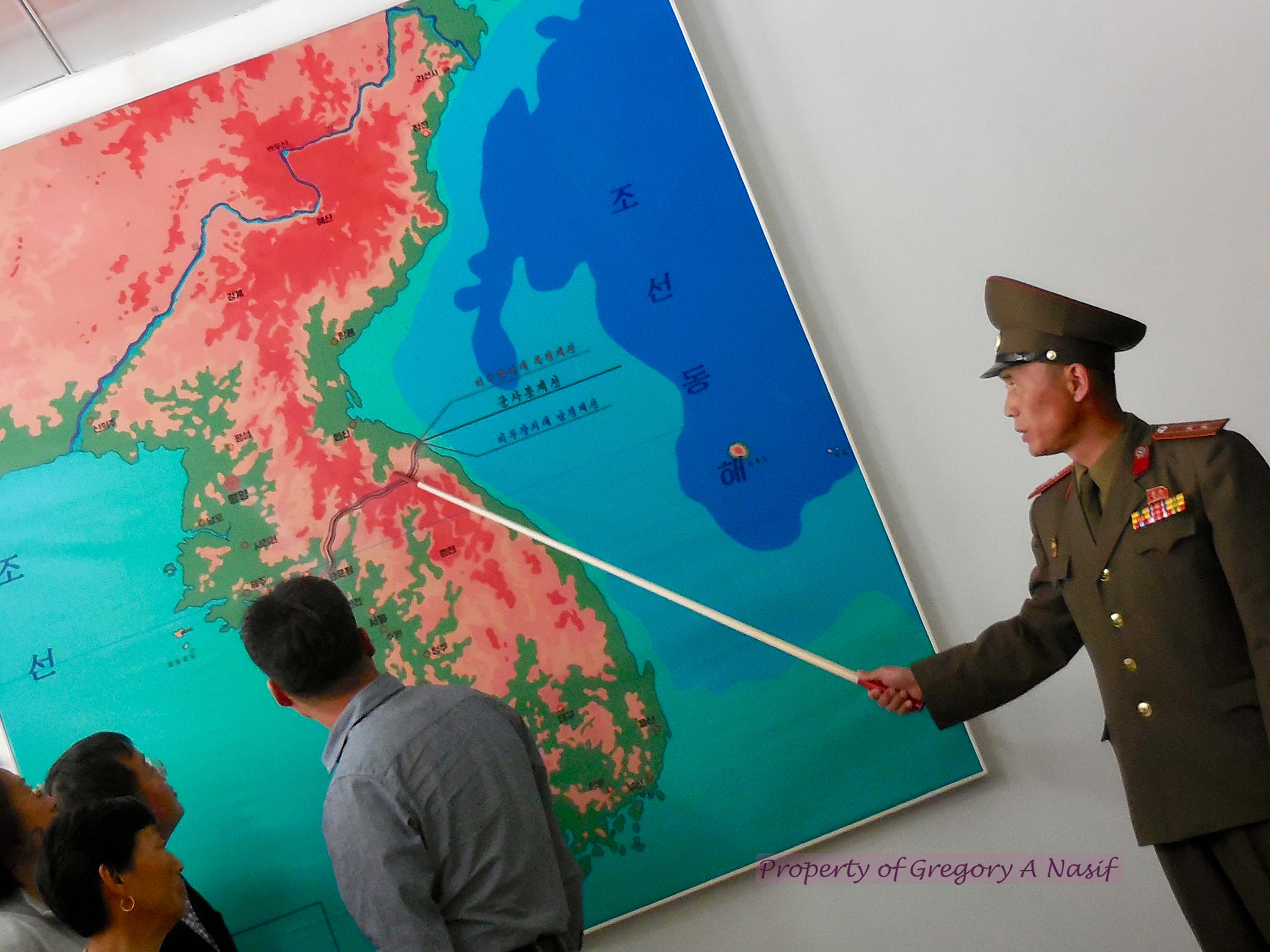
Roughly straddling the 38th parallel, the Korean DMZ is the final result of the Korean War, one of the deadliest conflicts in human history. The heavily-armed and high-tension borderline between the two Korean nations is open to tours in both Korean nations. It was a three-hour drive from Pyongyang.
Our first stop, however, was the Arch of Reunification in Pyongyang. The monument expresses the hope of reuniting the two Koreas. It’s calm; with so little traffic, one can lay down on the street if they wish.
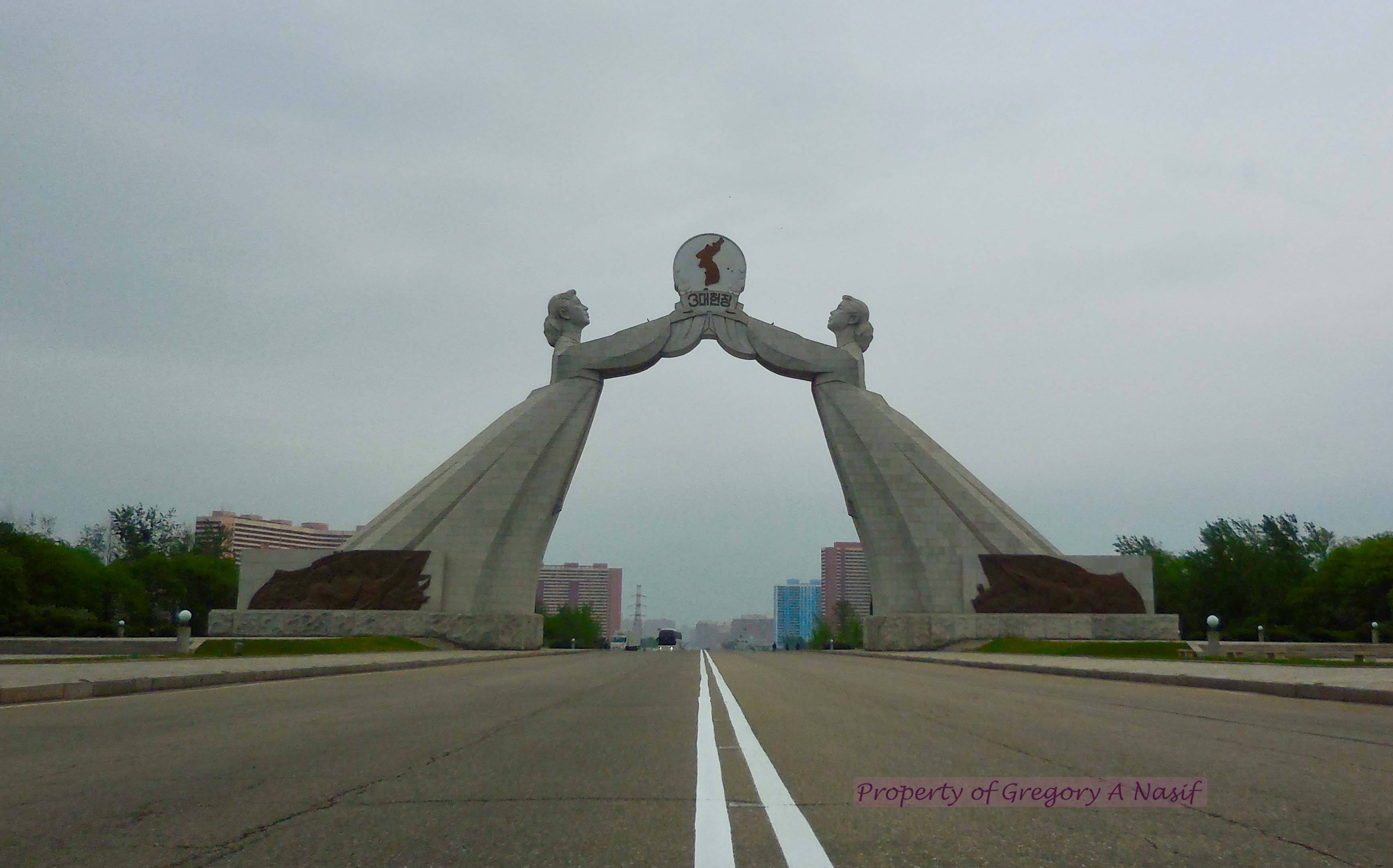
“Which side represents the North and South?” I asked.
“Doesn’t matter,” said the guide. “They are the same.”
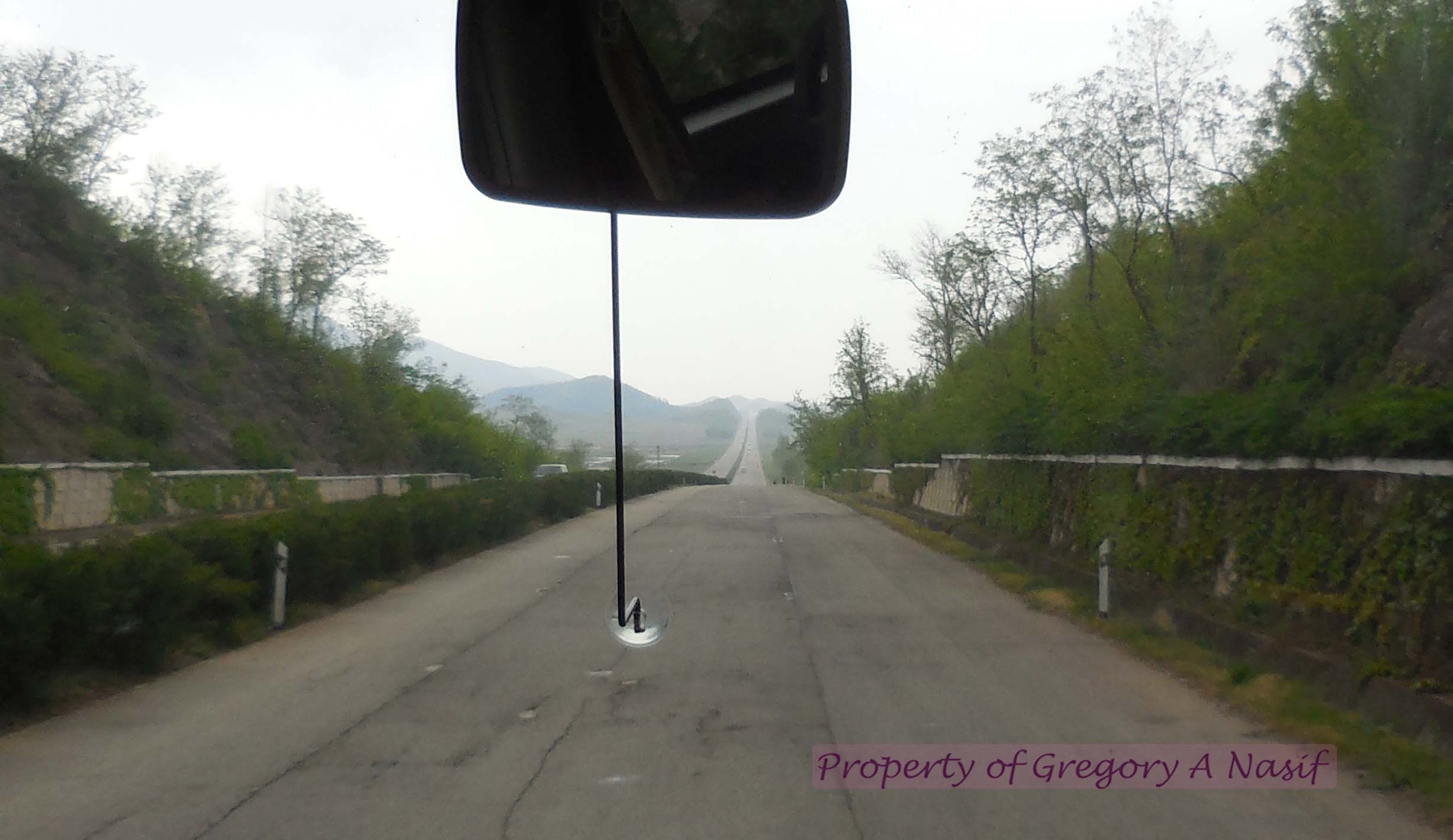
We then proceeded out of the city, quickly hitting rural areas.

The North Korean countryside is frozen in time.
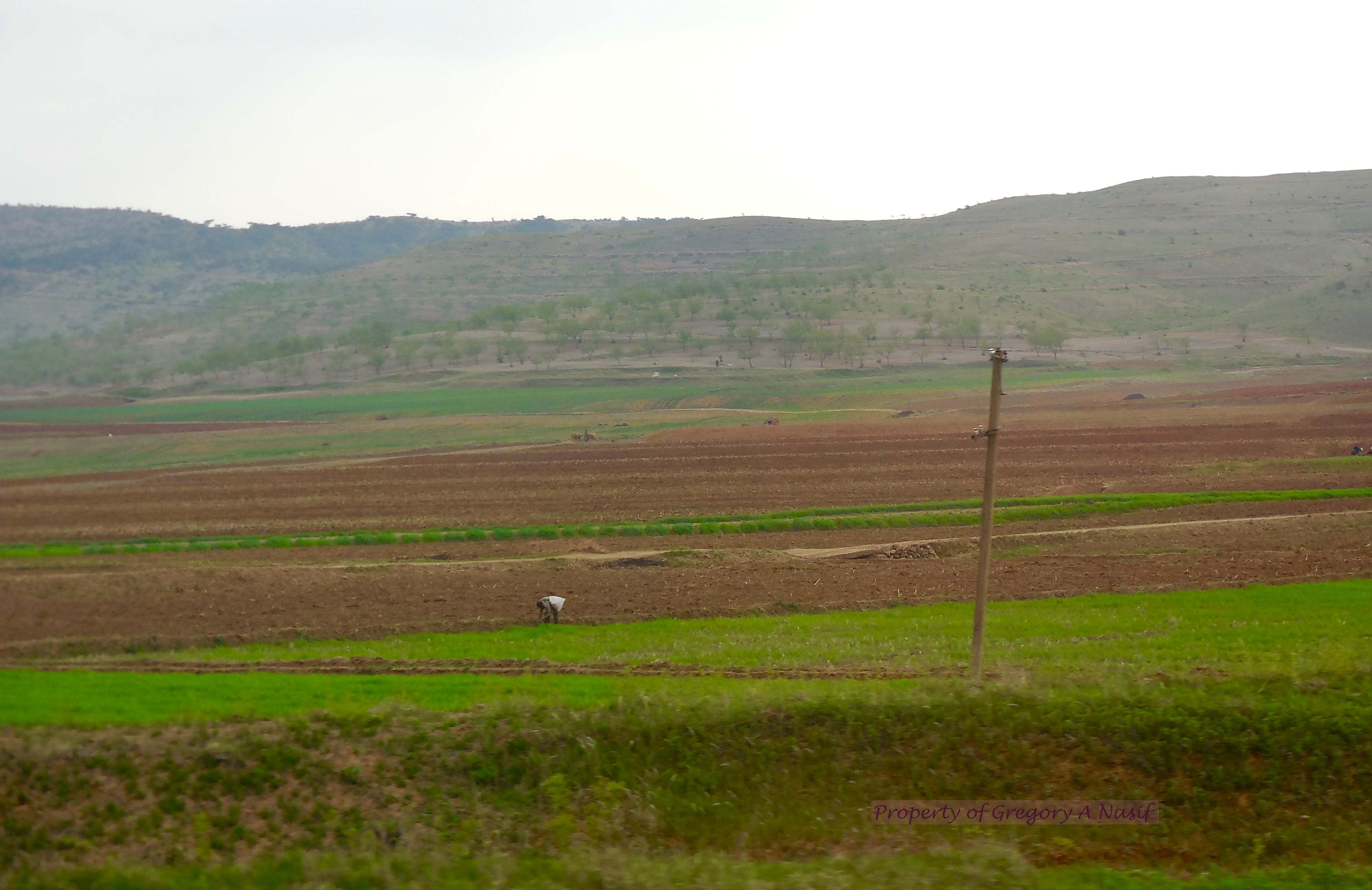
Cattle pull whittled carts through winding dirt lanes. People ride simple, vintage bikes.
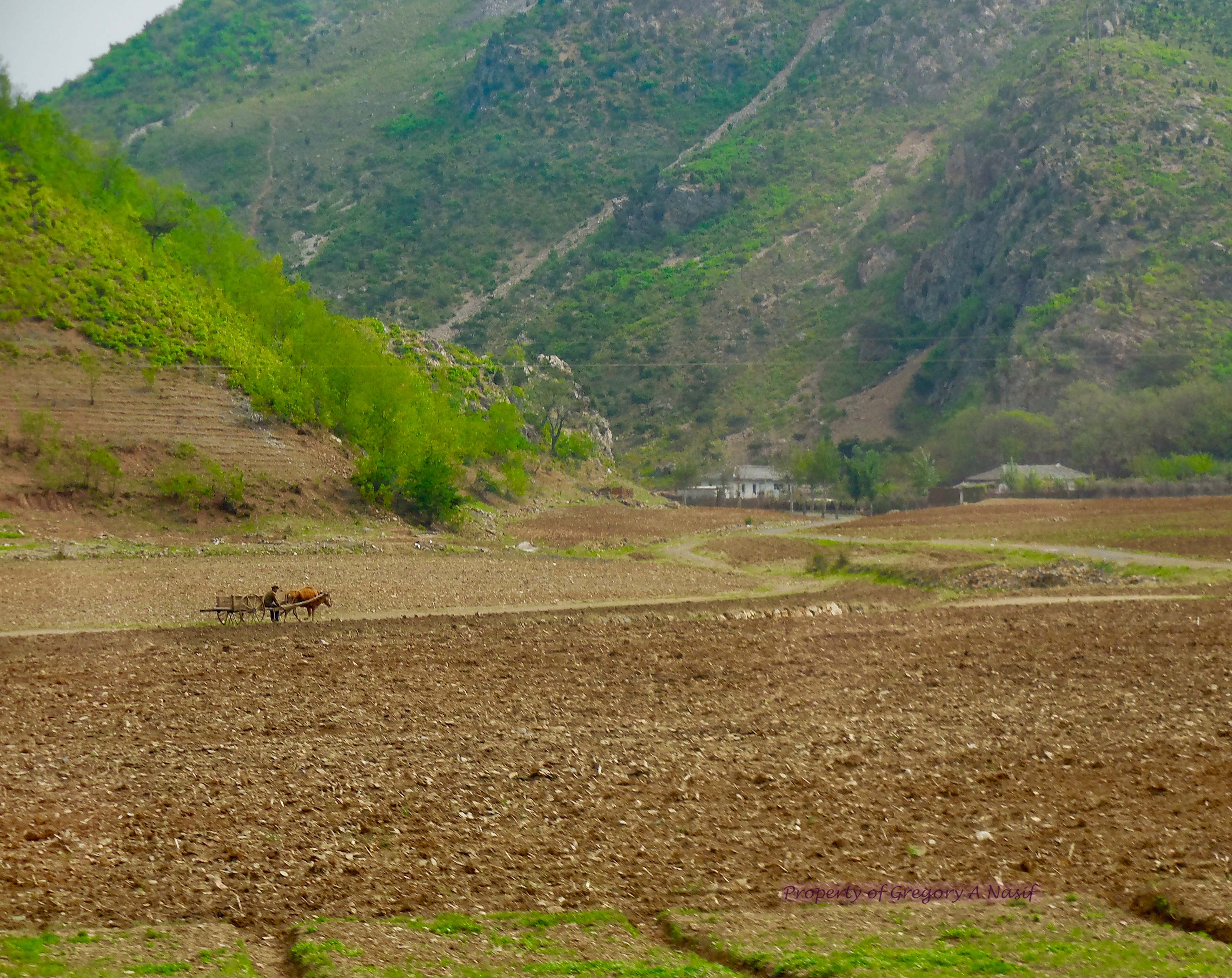
Colors are limited to green and brown nature, white walls and blue or gray rooftops, with small, visually robust murals in the few town centers. Buildings are rarely over one story, usually with traditional rooftops.
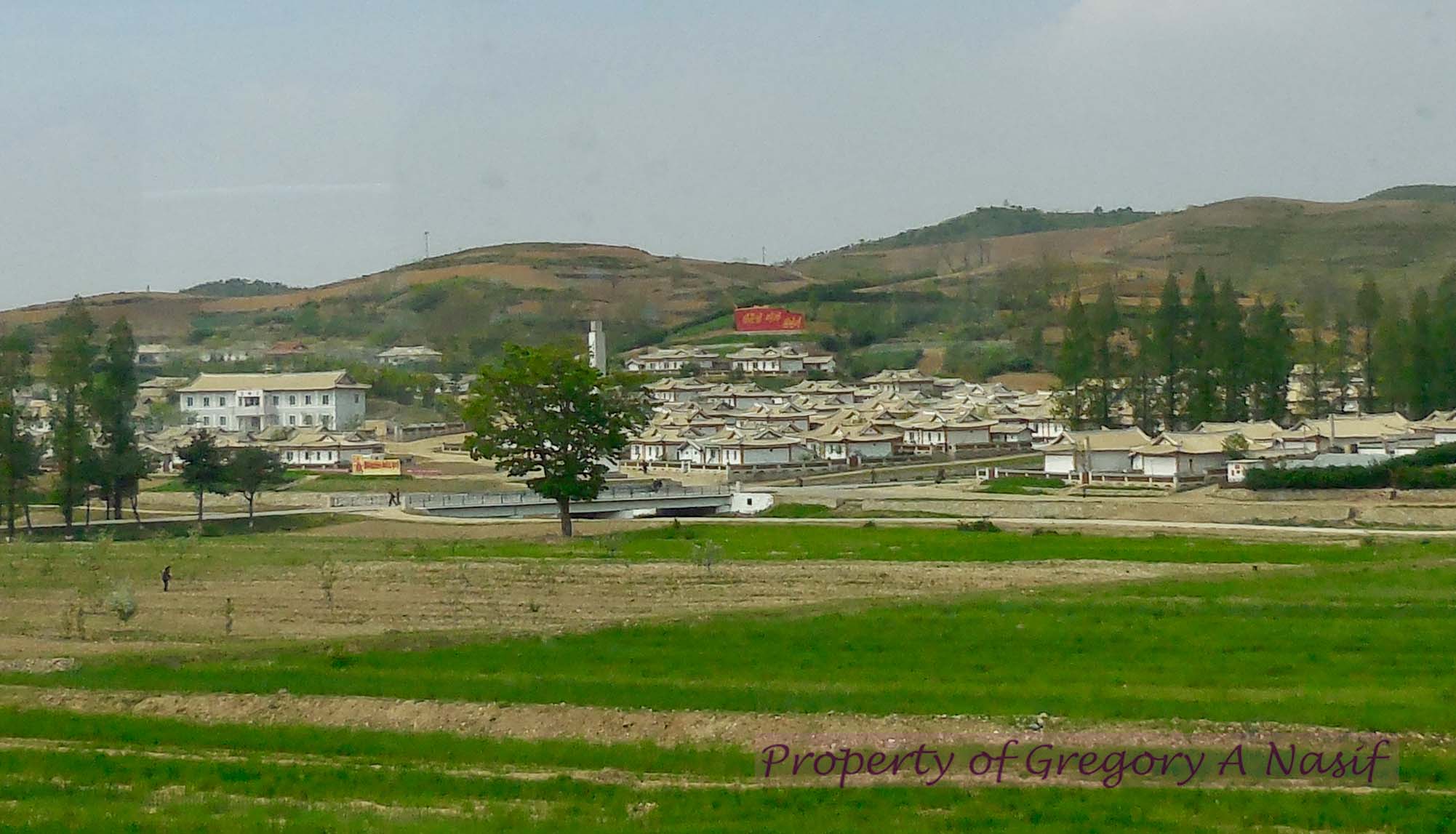
Mountains stand without any trees – cut down for firewood. A North Korean tour guide confirmed this fact, which I originally learned in South Korea.
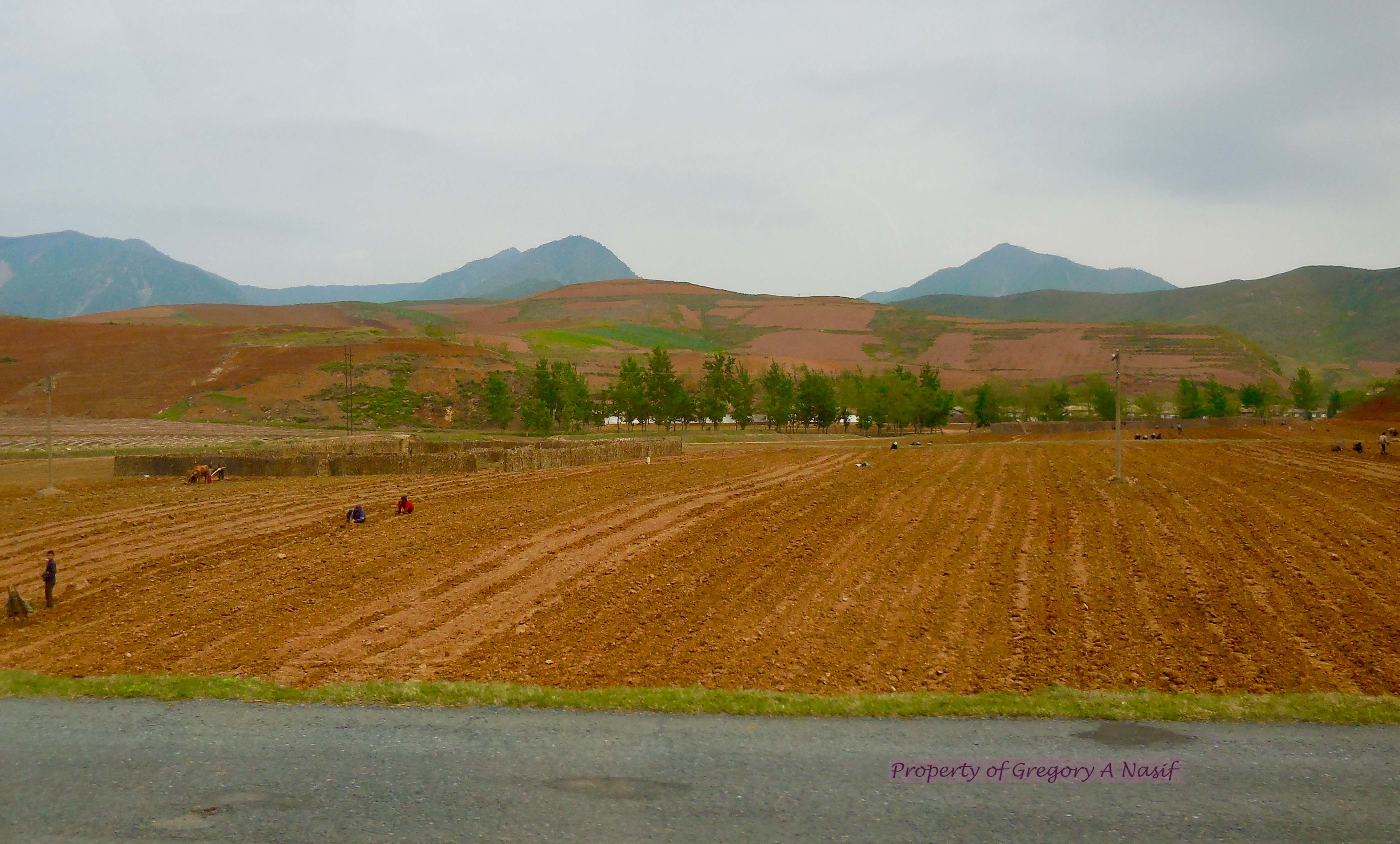
Farmers often work in teams, some seem to be giving directions.
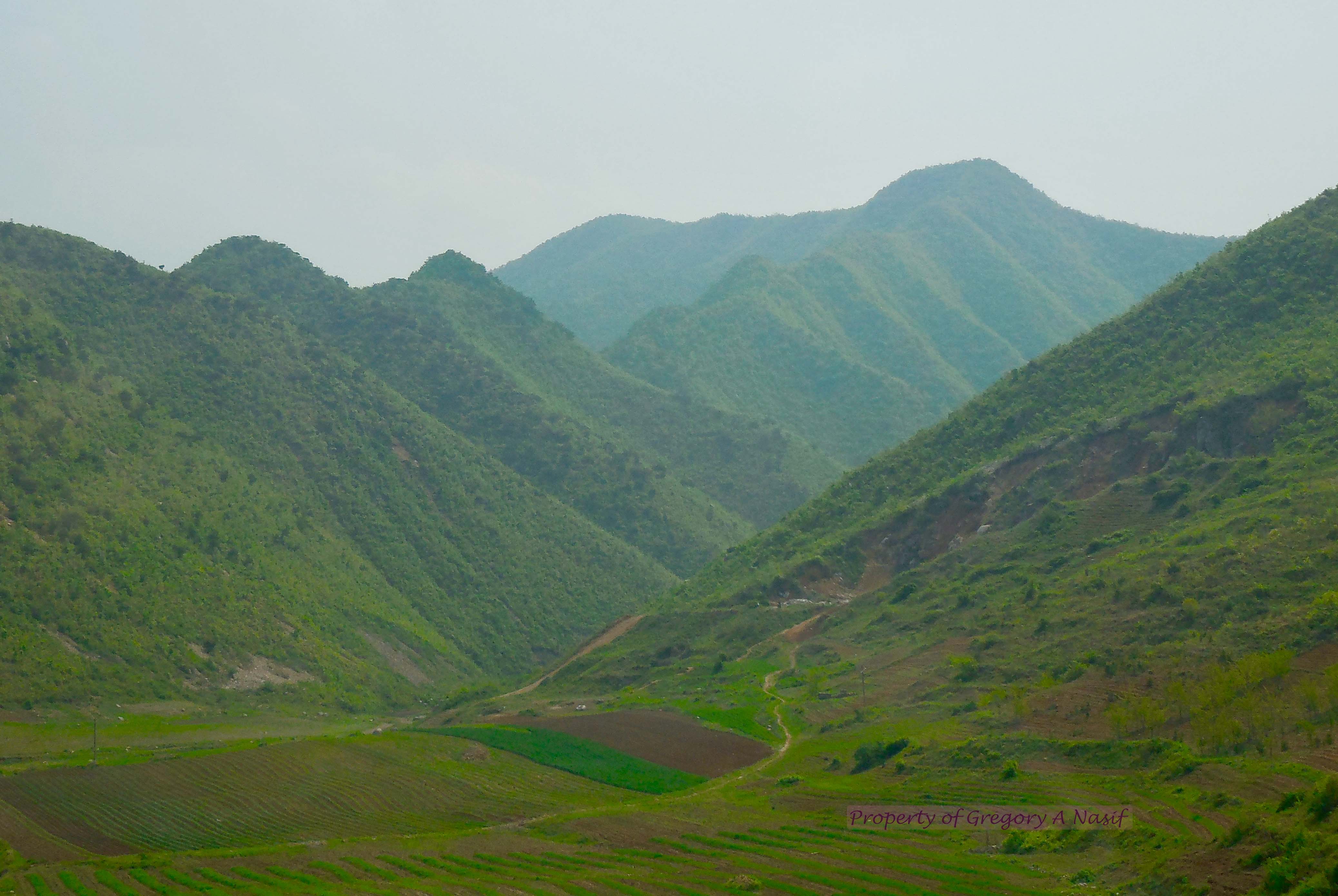
Livestock roams amongst the crops, thinner than in the west (or perhaps western livestock are fatter). Often no one is herding them.
Folks of all ages and appearances plant and tend to trees by the roadway. They are grown in rows. The benefit seems to be the state; we don’t know who the workers are or what their incentive is.
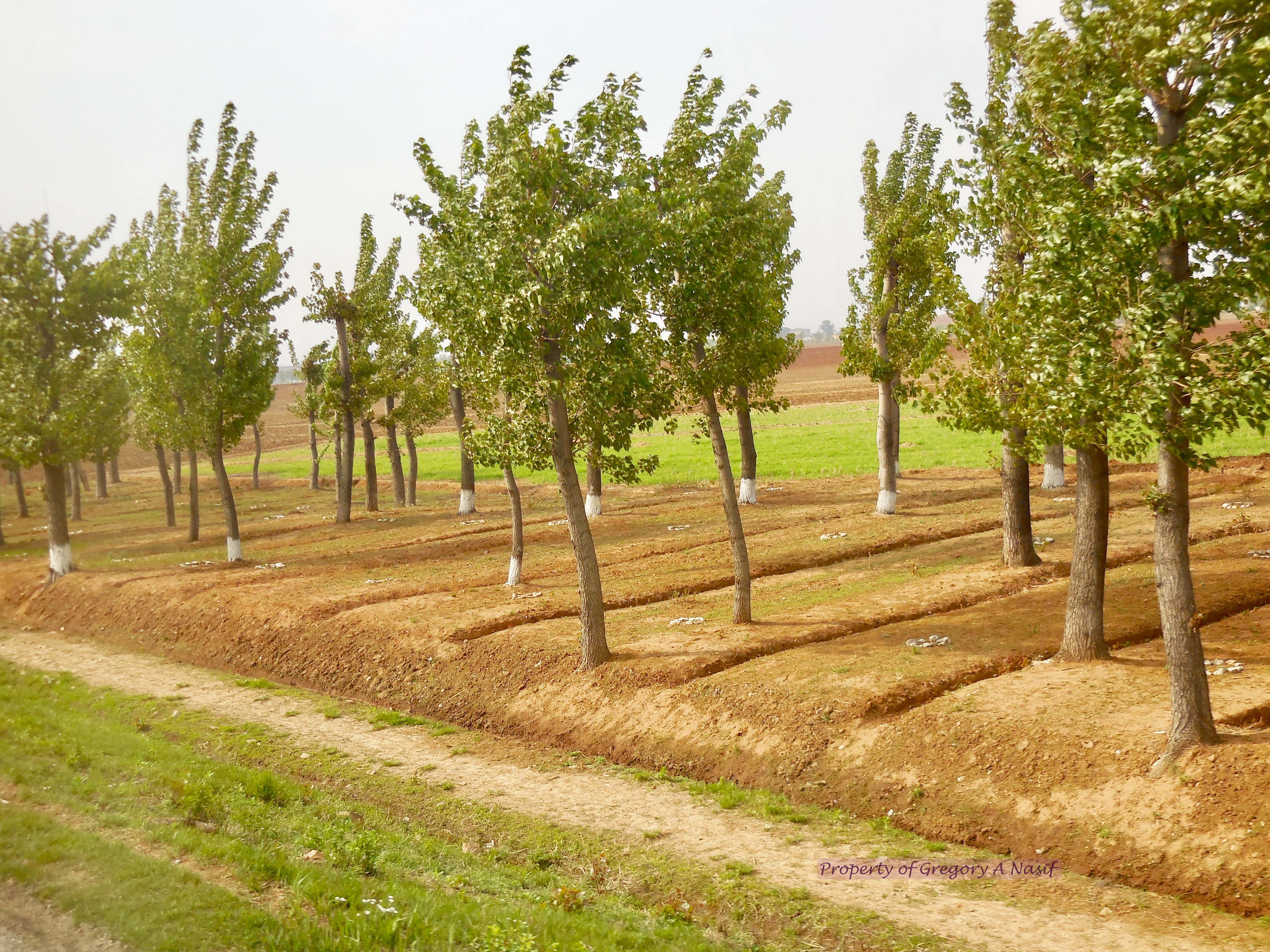 If the trees are supposed to grow within the white circles, a memo has been missed.
If the trees are supposed to grow within the white circles, a memo has been missed.
 Beyond the tree line, all land under a certain incline is farmland, even up into the mountains
Beyond the tree line, all land under a certain incline is farmland, even up into the mountains
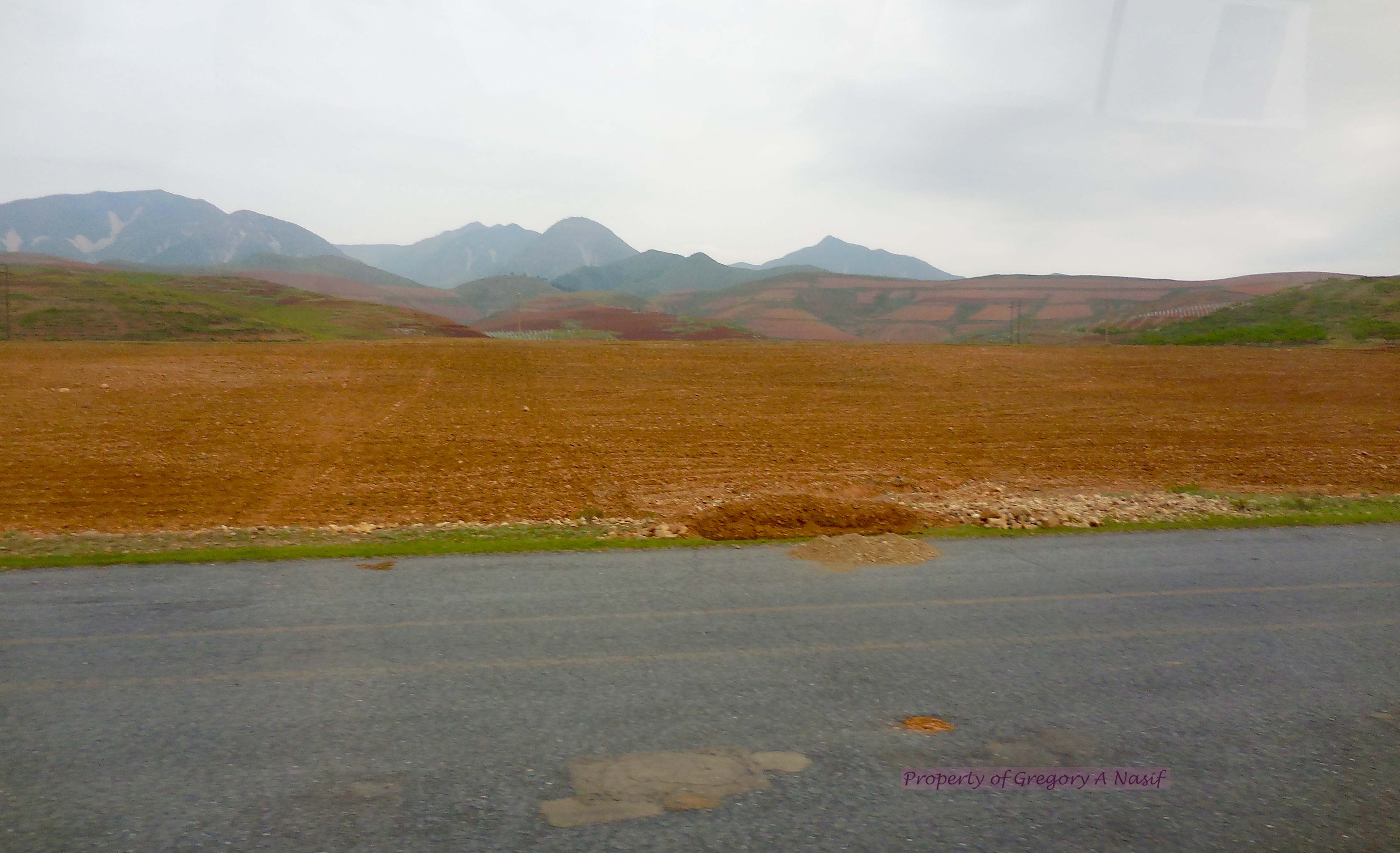 There’s muttering on the bus. Some of it may be staged – perhaps most highways aren’t given the honorable march of trees. Other moments seem almost too romantic.
There’s muttering on the bus. Some of it may be staged – perhaps most highways aren’t given the honorable march of trees. Other moments seem almost too romantic.
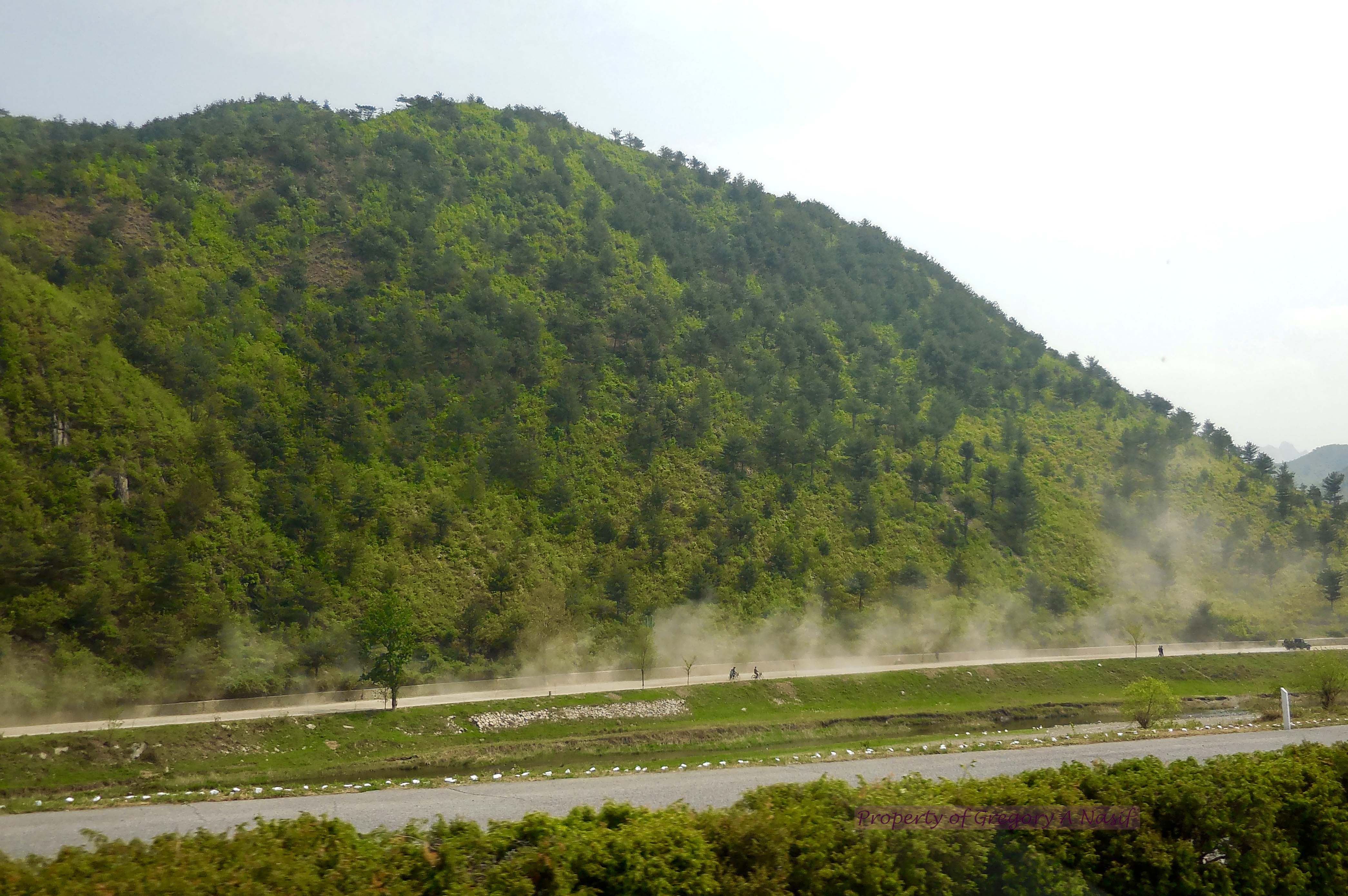
A woman hitches a ride on the back of her date’s bike – her skirt billowing over her outstretched leg. The charming moment happens just as the bus passes over their road, leading to their small village.
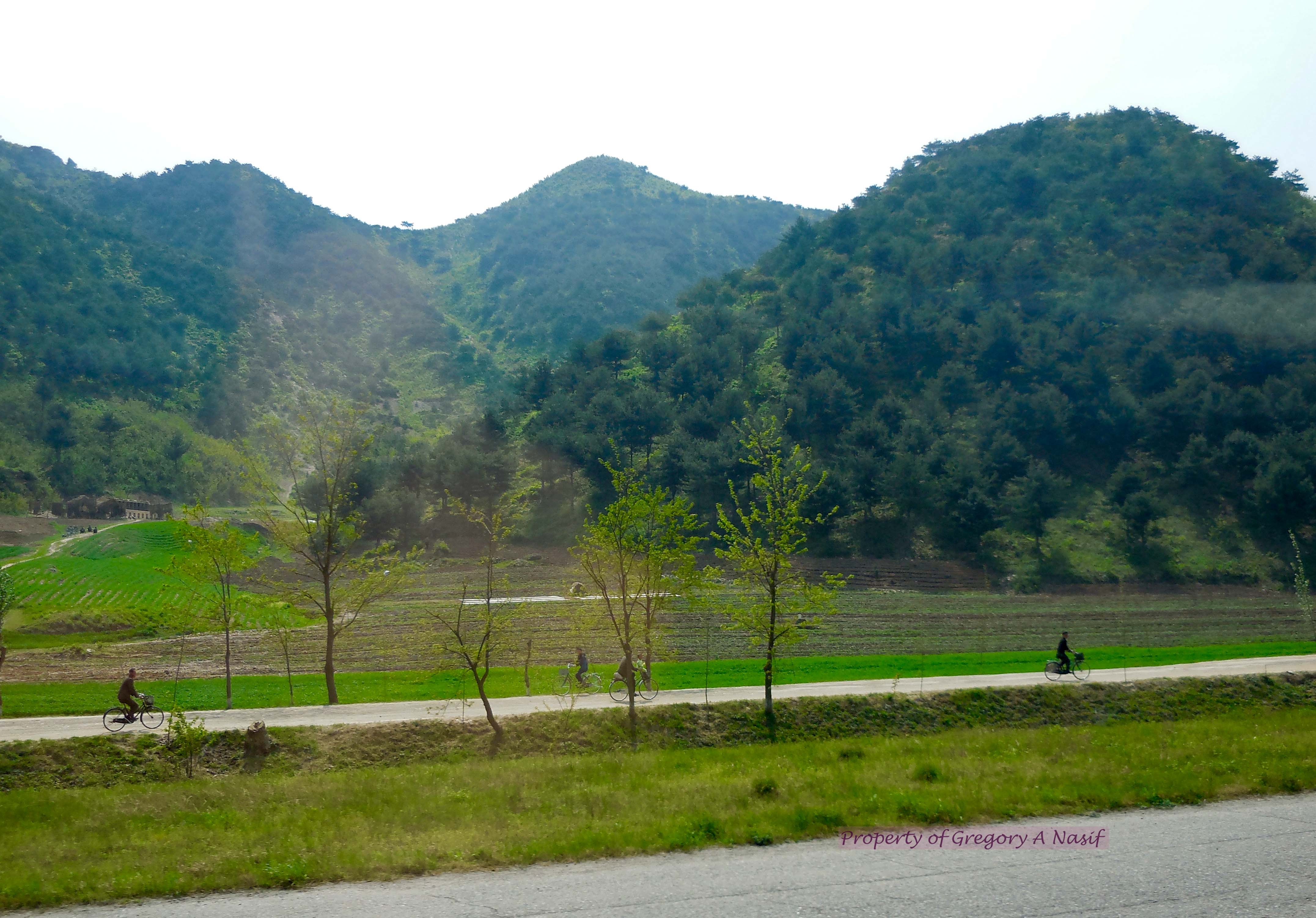 The wonder continues. Tourists don’t ride every highway in the country. If we went to the nation’s far-north, we might see North Korea’s notorious missile launch sites and inhumane labor camps instead of peaceful farms and small town folks.
The wonder continues. Tourists don’t ride every highway in the country. If we went to the nation’s far-north, we might see North Korea’s notorious missile launch sites and inhumane labor camps instead of peaceful farms and small town folks.
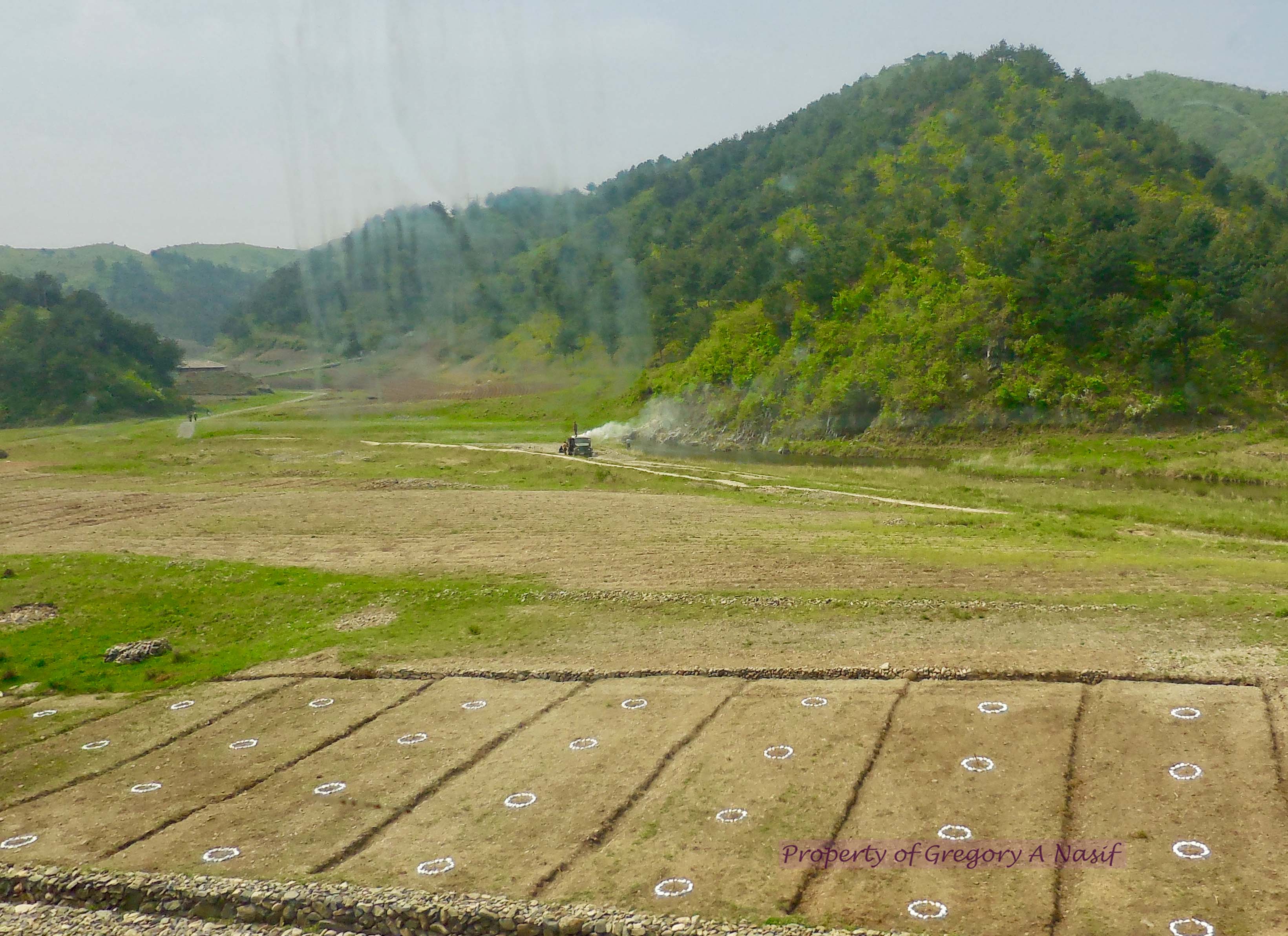
But this highway bears less resemblance to a World War II era-concentration camp, and more to a peaceful stretch of rural farmland from the same time period.
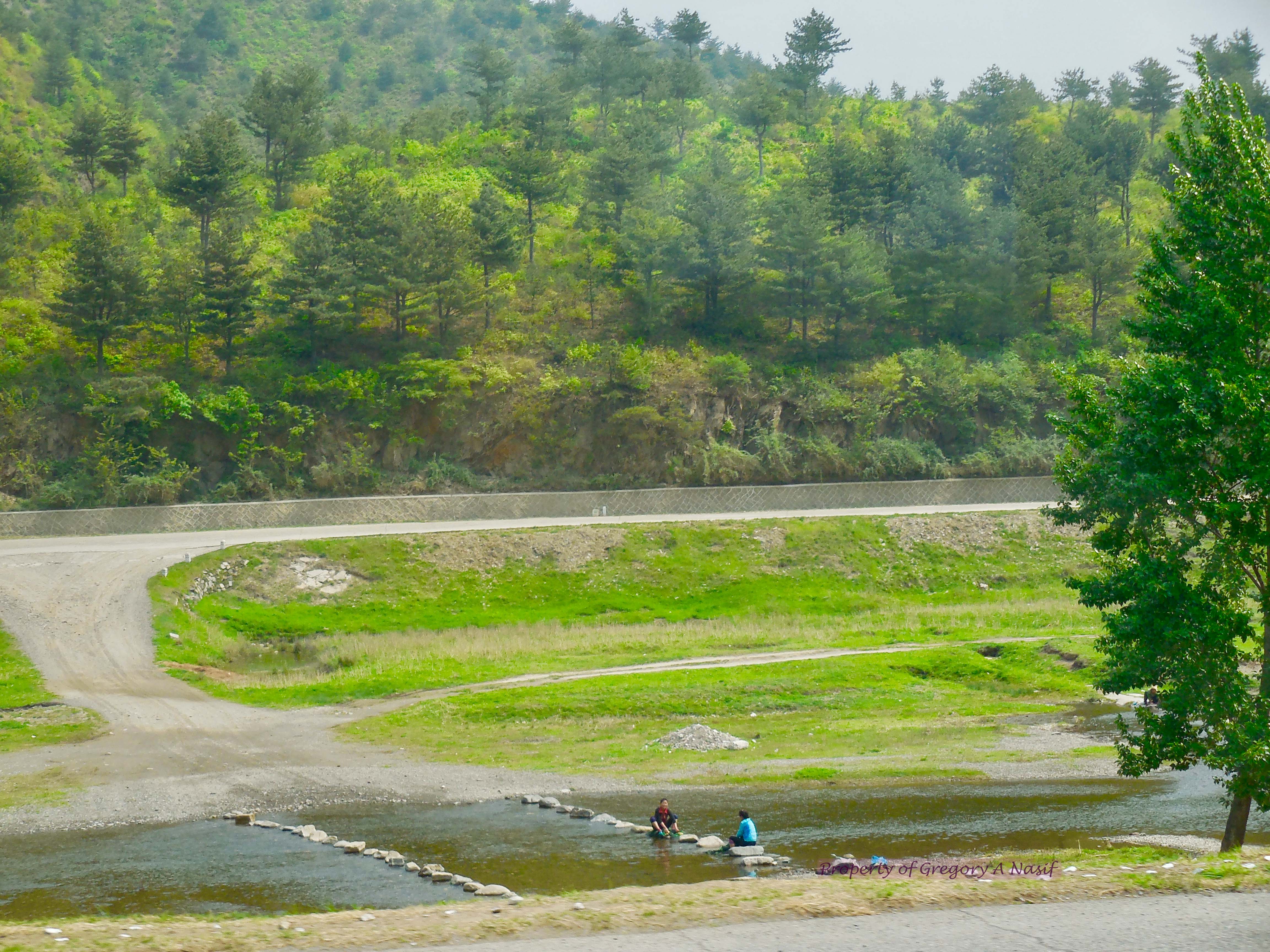
On the way, the guides give us their version of current events.
The lies were absurd – the Americans provoked the war, the North won it, and apparently no help from any particular communist allies was worth mentioning. Mr. Hang, meanwhile, was adamant that North Korea must maintain its aggressive military posture. “Without power, without strength, you cannot ask the other side for peace,” he said, echoing Teddy Roosevelt’s “walk softly and carry a big stick.”
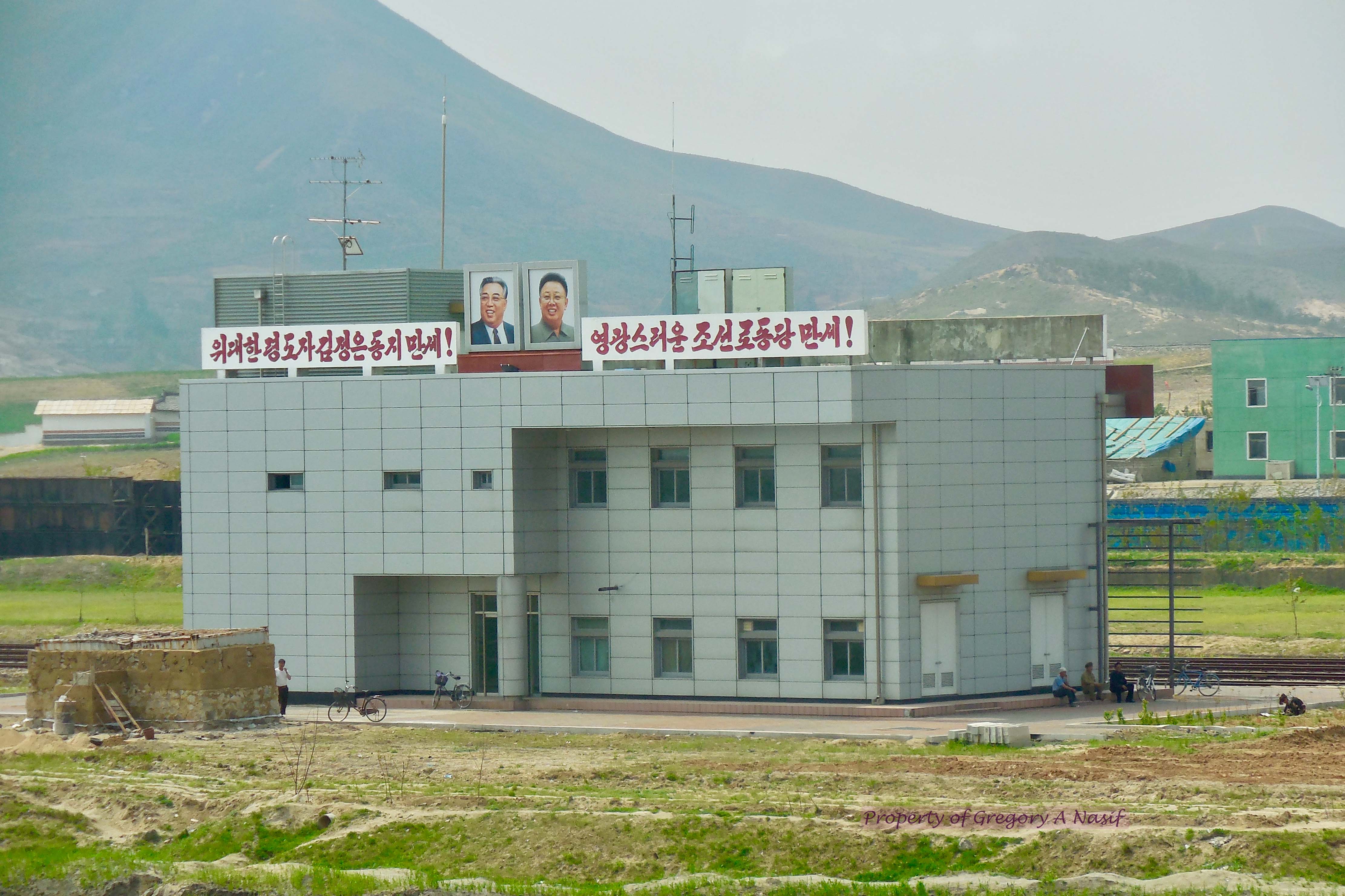
We passed the city of Sariwon, and then stopped at a rest stop with markets set up for foreign tour groups, selling soju (Korean rice wine), souvenirs, and coffee.

We eventually moved through a small strip of Kaesong before arriving at the DMZ.
The DMZ:
Upon our arrival at the day’s primary destination, photo restrictions were tightened – officially, no military photos were permitted in the entire zone.
These two propaganda photos stood outside the gates to the area, next to a souvenir shop.
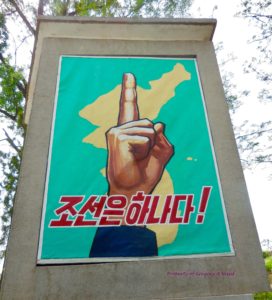

The shop contained many typical souvenirs, like cutlery, dishware, shirts, hats, trinkets, etc. It also had many popular propaganda photos and paintings, which often castigated American and Japanese soldiers with cartoon caricatures.

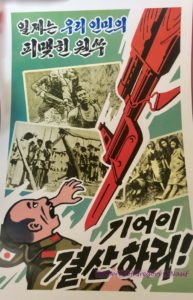

Entering the next room, a tour guide was translating for an irritable North Korean officer as he explained the area and its place in his own version of history.
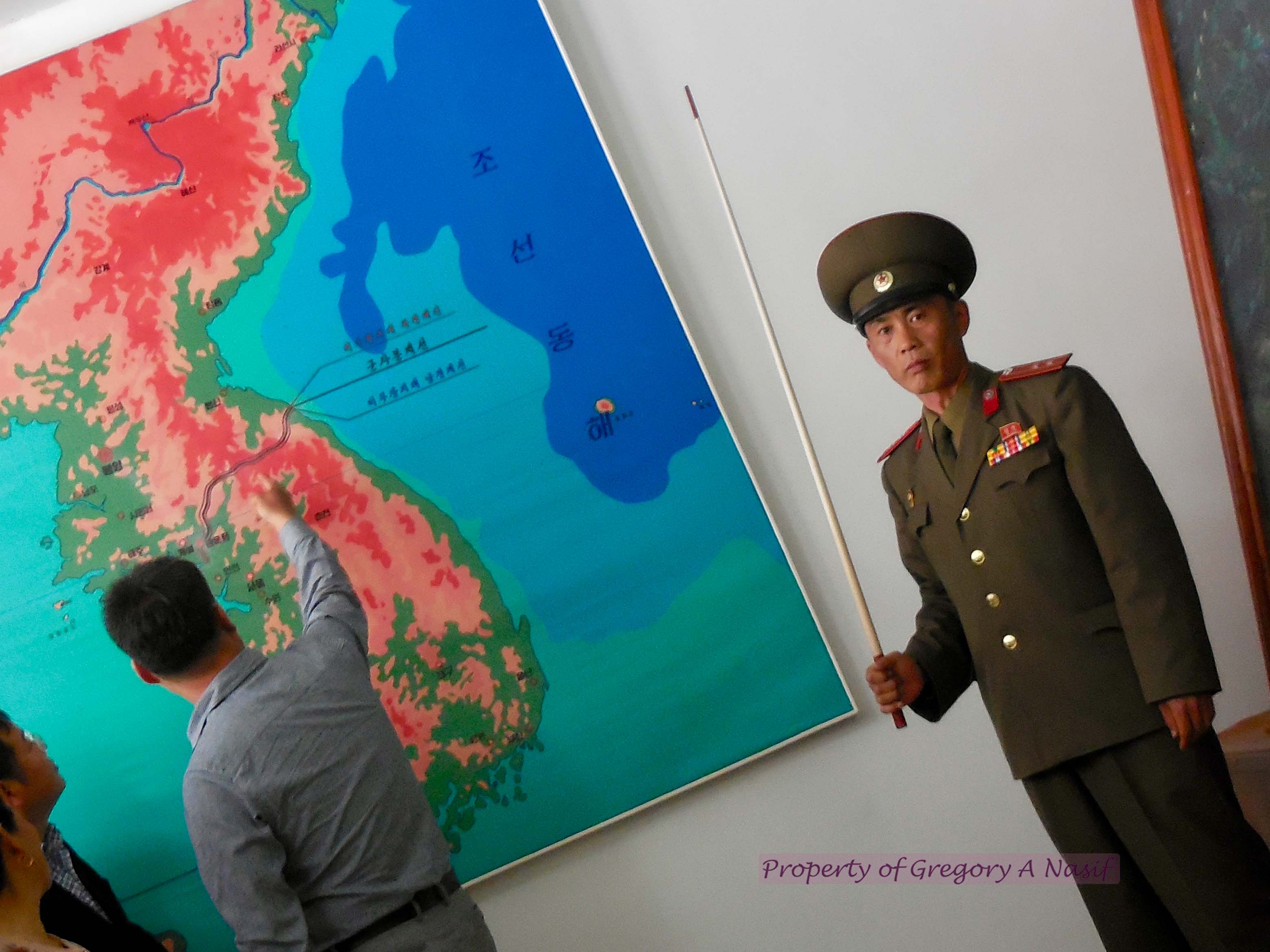
The room was mostly full of Chinese tourists receiving the same explanation in Mandarin; one wonders how the day’s narrative differs from their understanding of the war.
The depth of the tour through the DMZ was surprising, given North Korea’s secretive reputation. Several landmarks of the war stood in their territory, north of the Demarcation Line, providing desperately needed propaganda support that the North Koreans “won” the war.
We moved out from the presentation room and were hurriedly rushed into several lines, reflecting our buses. Told to remain silent and take no pictures, we walked through the gate, into the DMZ, and down a short, fortified road. The moment felt like the first day of boot camp.
The road was narrow and fortified with collapsible barriers. Growth around the cylindrical barriers suggested they hadn’t been moved much in decades. I was most reminded of preserved Nazi bunkers and batteries in Normandy. Compared to the modern bridges probably rigged to blow in the southern DMZ, these defenses were hardly intimidating.
At the end of the walk, we boarded our bus again. This time, a Korean People’s Army (KPA) soldier boarded the bus with us. Our tour guides were visibly on edge now, not smiling, talking less, even sweating a bit.
The bus rolled further down the road. On the right, a famous landmark became visible.
Having seen it a year earlier, I recognized it instantly as the flag pole of Kijong-dong, “Peace Village” as it’s known in the north, or as it’s known in the south, Propaganda Village.
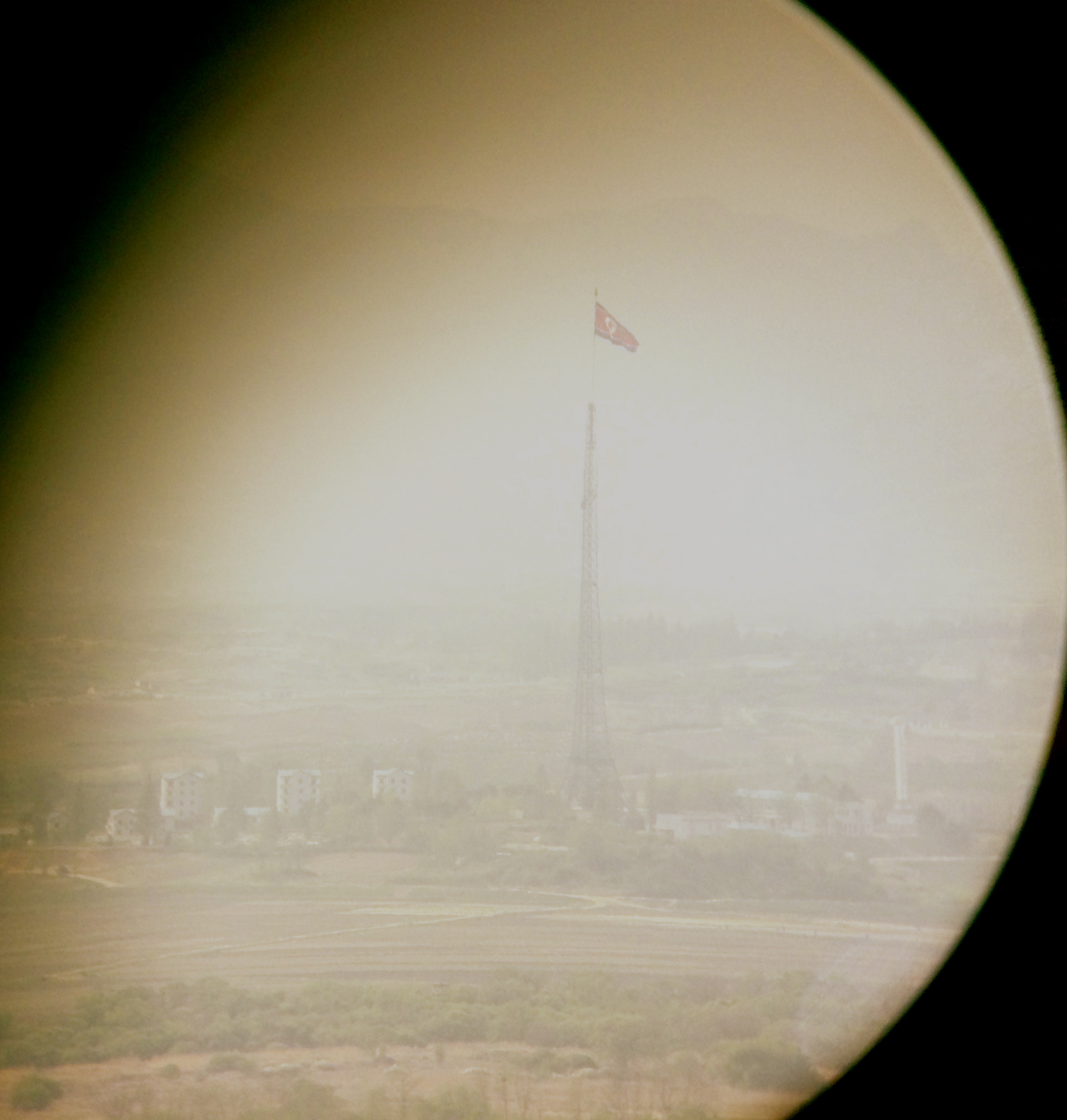
Propaganda Village from South Korea, May 2015
We’d get a better view of the flag in a few minutes time. Meanwhile the South Korean flag, almost as tall, was visible far in the distance for a brief moment, before we arrived on a small wooded lane and disembarked from the bus. The guides and soldiers began to elaborate on their version of history based on “American treachery.”
“The Final Liberation War was fought against American aggression,” a guide says. “The US could not allow a socialist government of the people. They wanted to take Korea, so they could take China and the USSR next!”
A large plaque bears the “last signature of Kim Il-sung.”
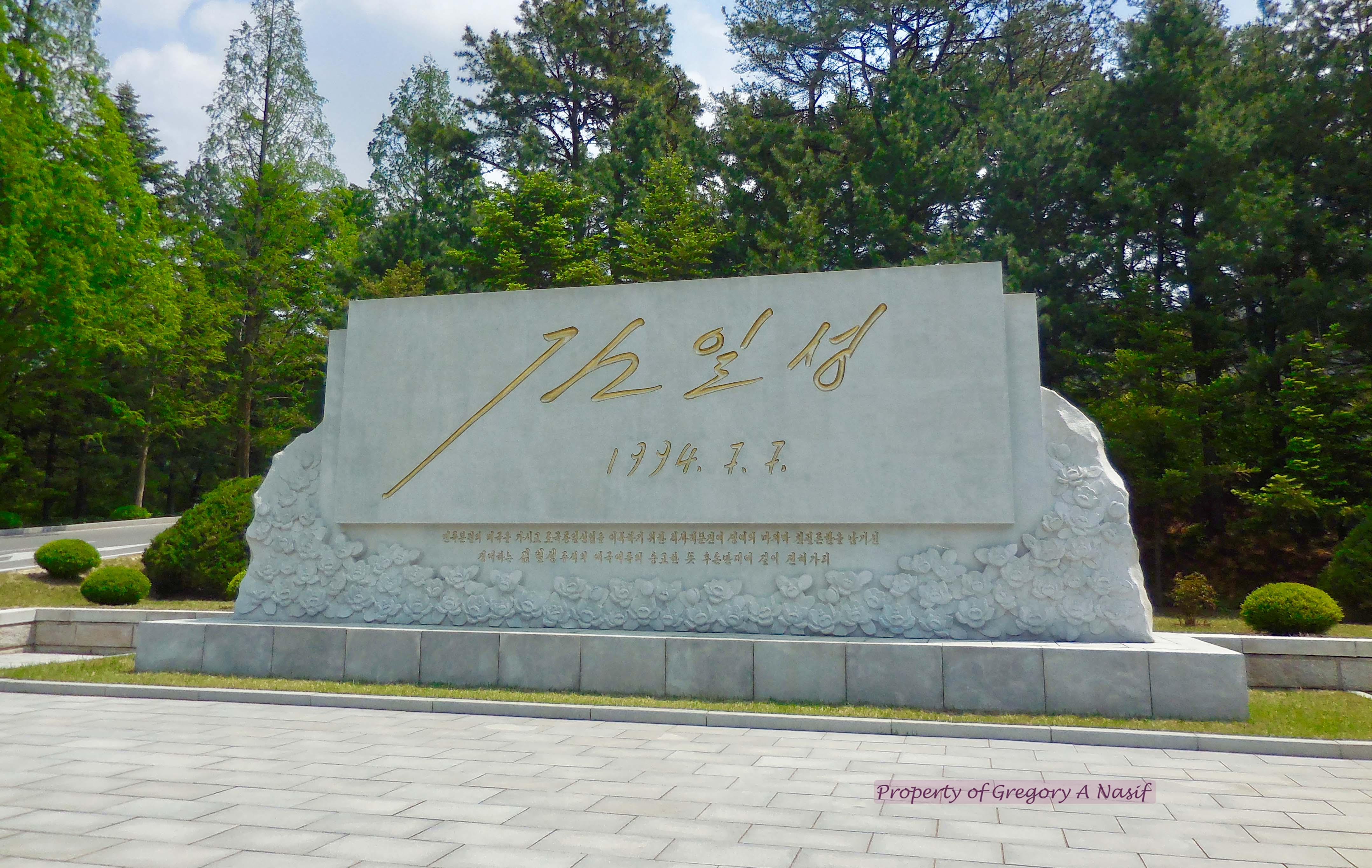
Allegedly this signature was on the Ten Point Program For Reunification of the Country, which was a North Korean-made plan to reunify Korea. The guides insist the US is deliberately sabotaging unification efforts.
Then we were led into a small hut, where supposedly Americans had “begged for surrender” (where the cease-fire negotiations took place) during the Korean War.
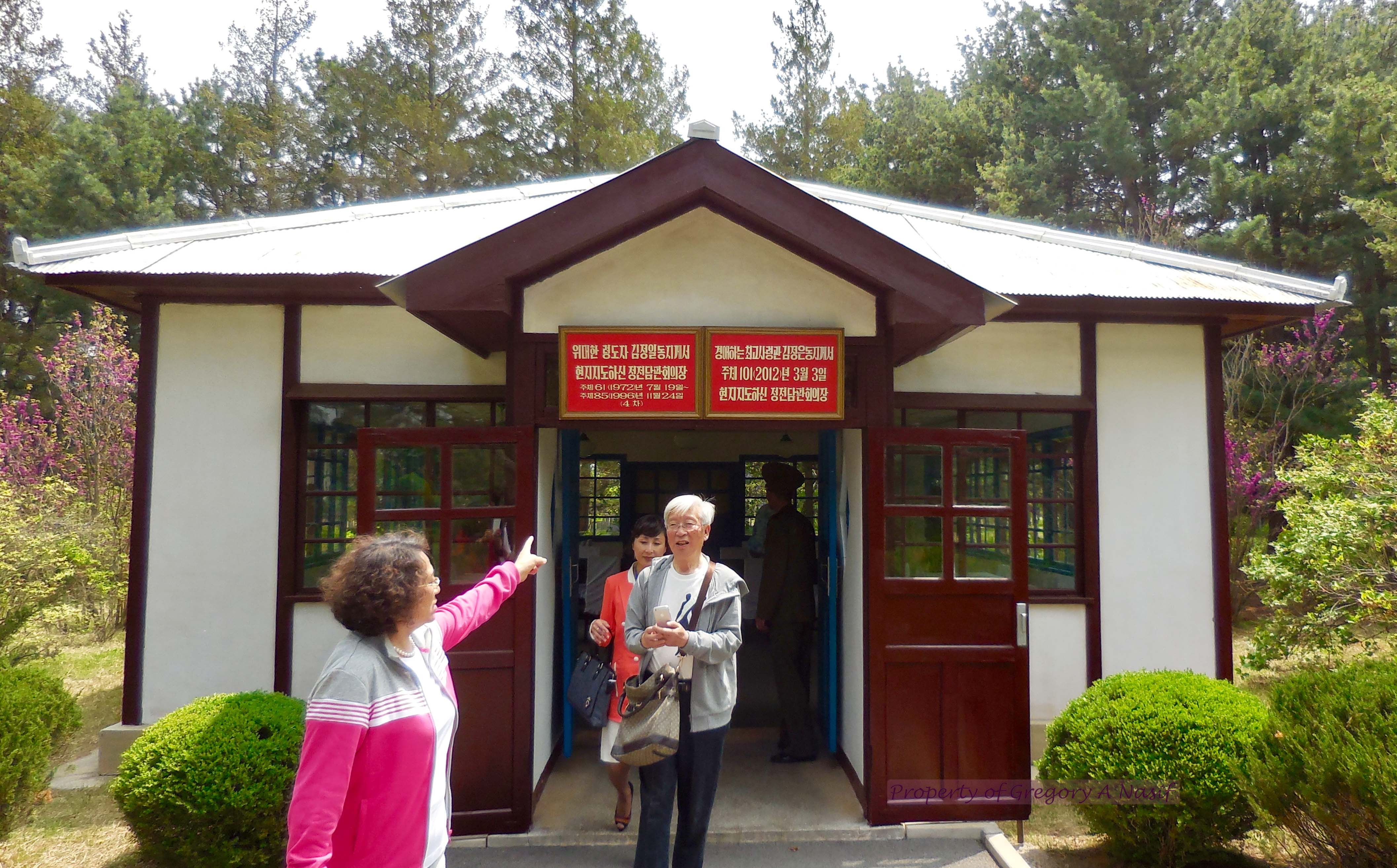
In fact, North Koreans weren’t even involved in the negotiations between Chinese and American-led UN diplomats. The negotiations dragged on for two years, from 1951-1953 while the Korean War had stalemated, over what the guides called “disagreements.”
They did not mention what those disagreements were: the vast majority of PVA and KPA soldiers refused to be repatriated to their communist rulers, which was obviously unacceptable to those governments seeking subjects to rule (in this writer’s humble opinion, this stat alone indicated the true winners of the Cold War just as it was getting started).
Later on the bus, I made sure my tourmates were aware of this ignored fact.
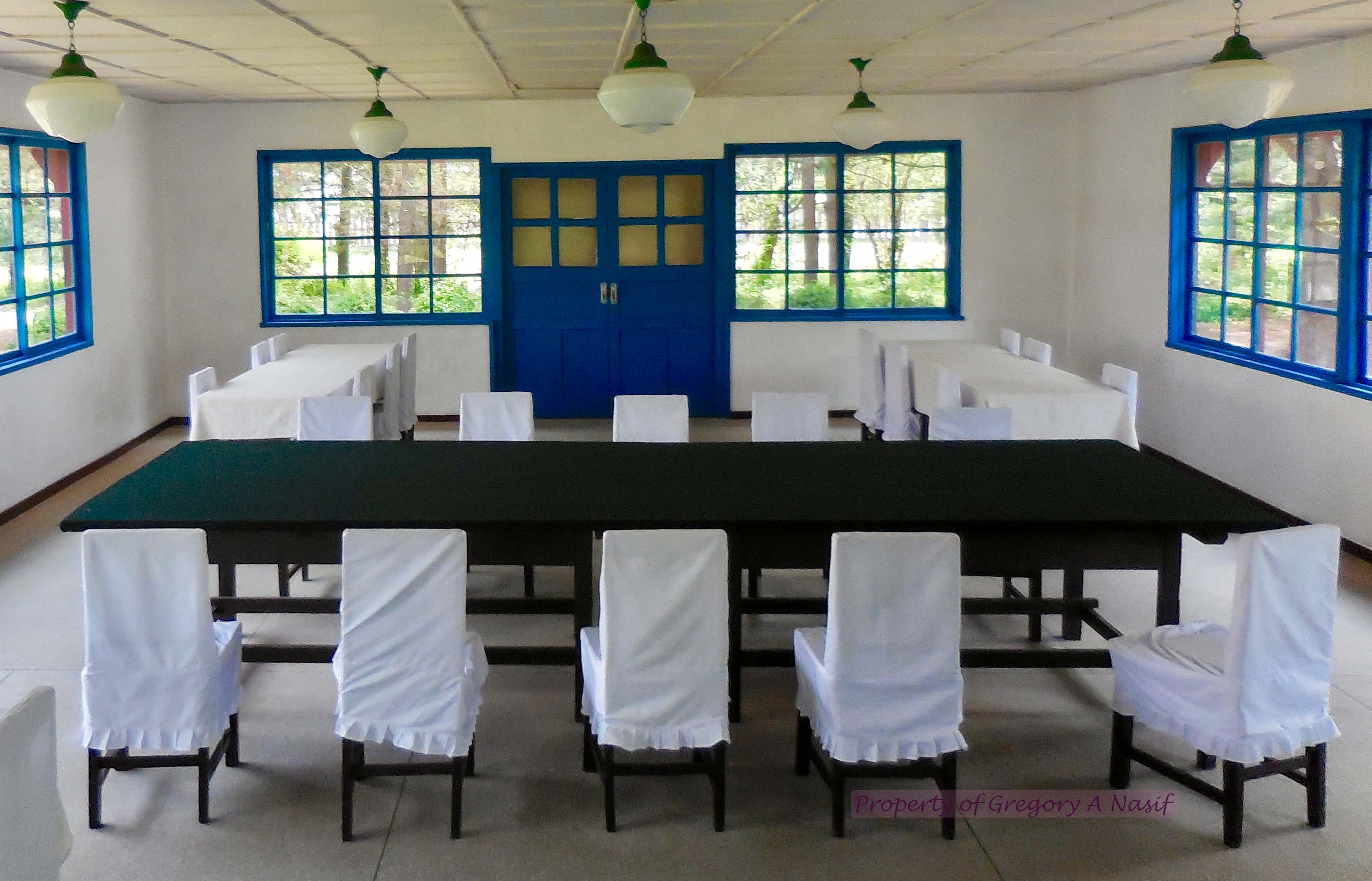
We were invited to sit around the table as if we were involved in the negotiations ourselves. I made a show of shaking hands with a tour guide, who seemed pleased to take part:
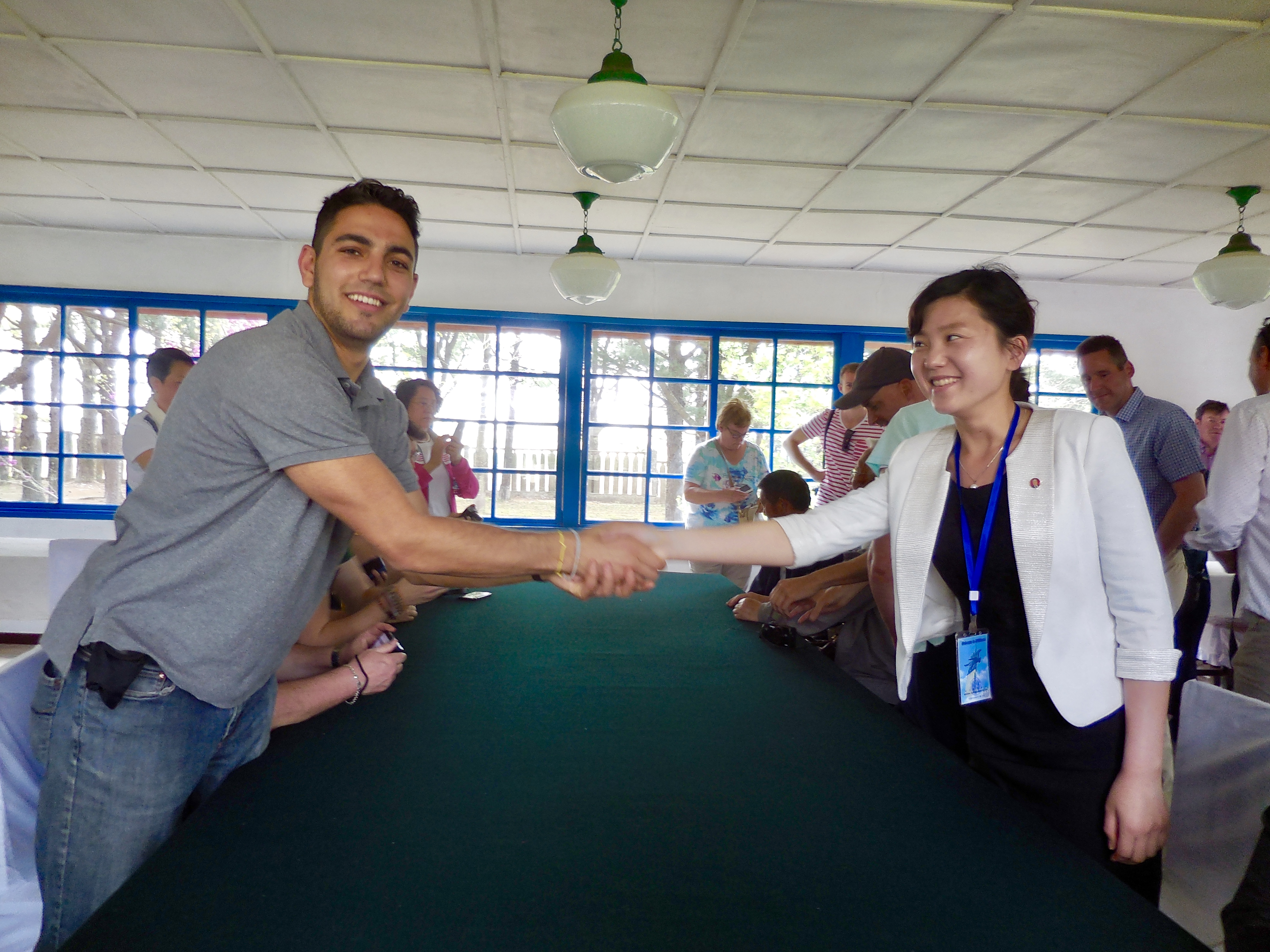
I should perhaps have chosen a Chinese tourist instead.
The signing of the armistice comes with one more tale from the North Koreans, of which there is little clarifying information in the free world. A larger hall stands next to this negotiation hut, which the North Koreans now call the “Peace Museum.” This building was constructed for the signing of the armistice.
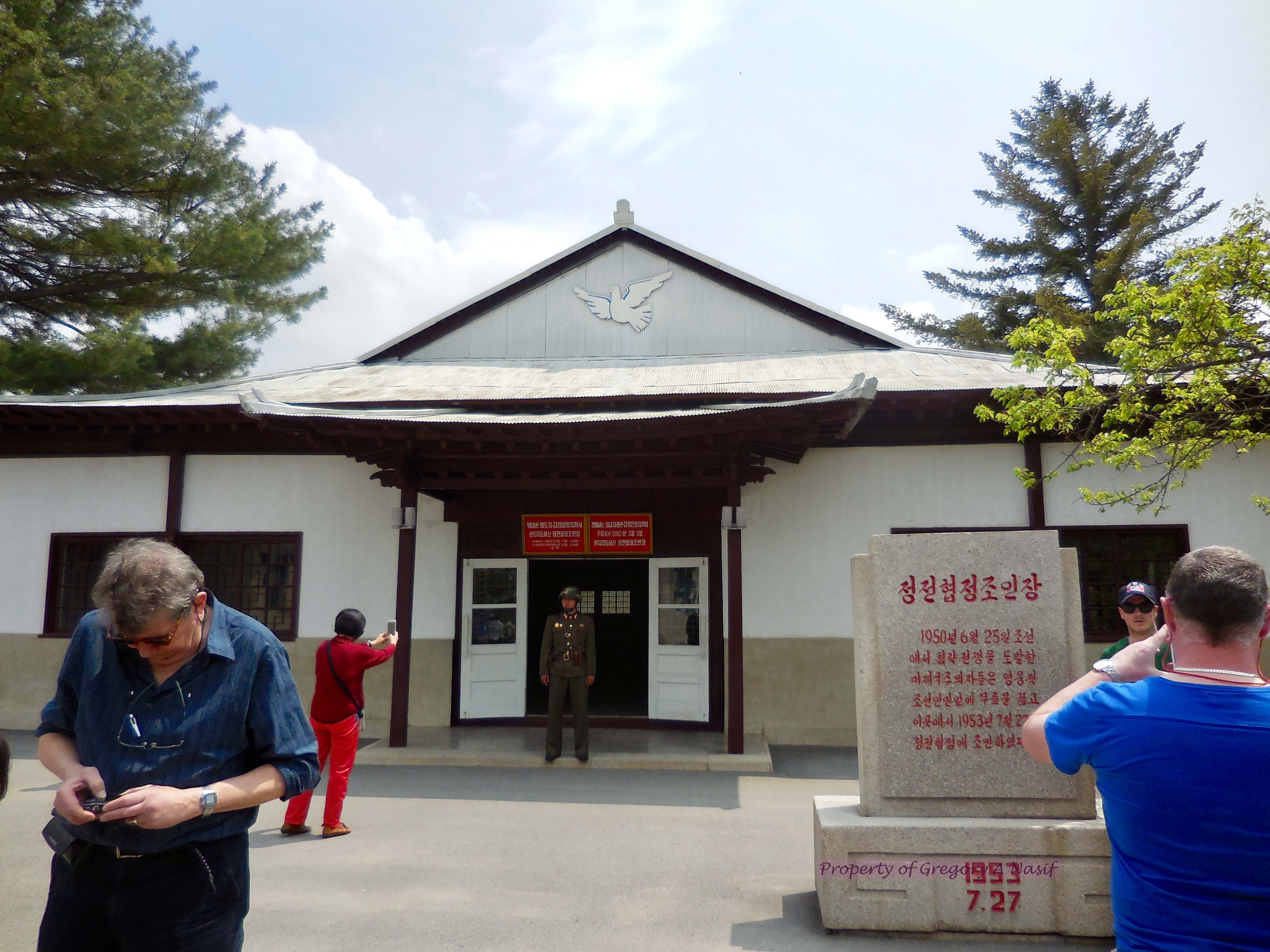
The Americans, the tour guides explained, wanted their “embarrassing surrender” to be lost to history, and so wished the armistice to be signed in a tent (i.e., immediately). The Koreans however, according to their own account, wished for their “victory” to be remembered, and so for it to be signed, enshrined, and immortalized in a grand hall – this building, which they claim was built in five days on orders from Kim Il-sung.

There is no confirmation for this claim anywhere I can find. Even without an engineering background, it still sounds impossible to believe.
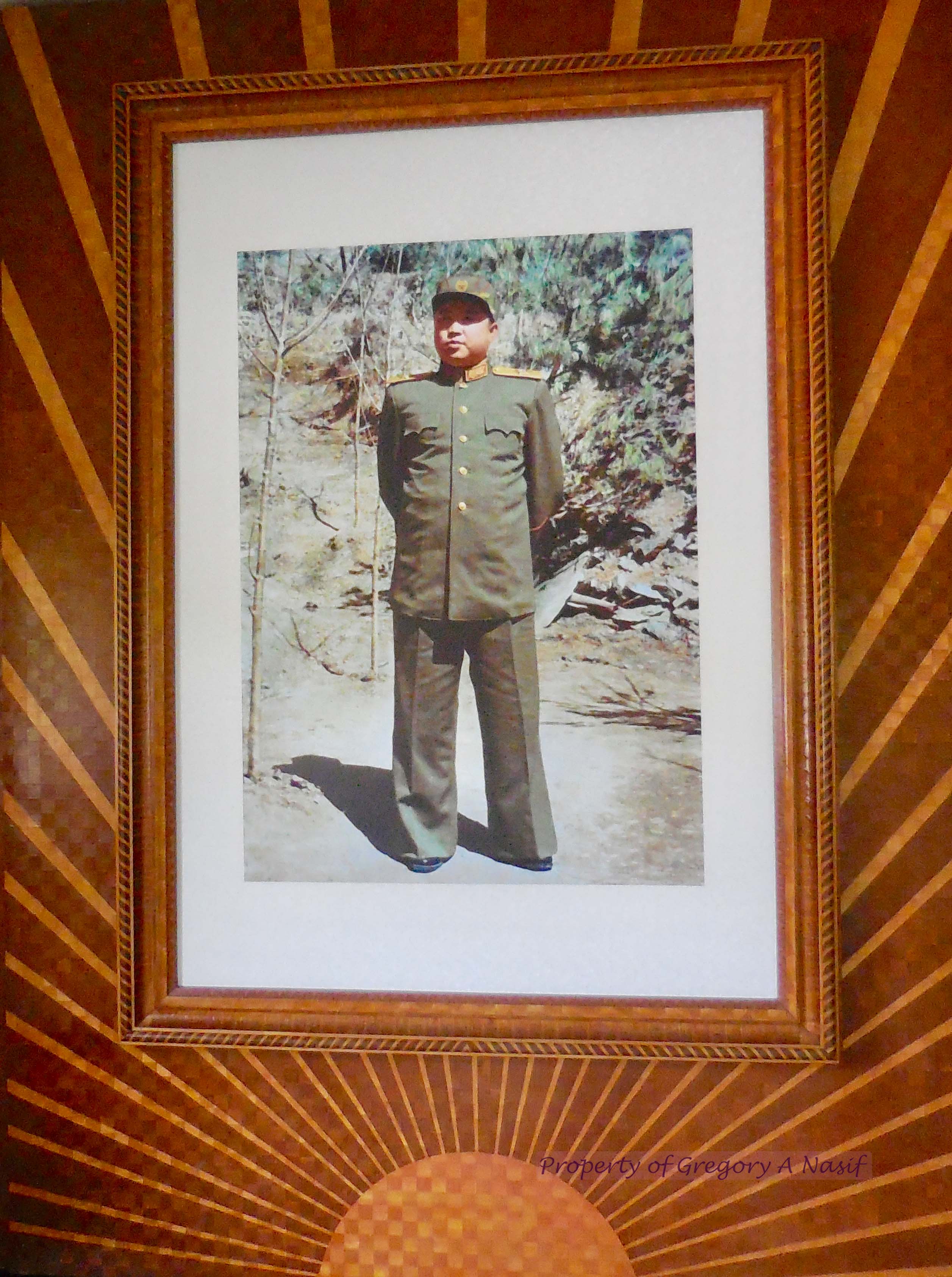
The inside of the hall contained original copies of the armistice and the flags used in the signing ceremony, as well as several exhibits extolling Kim Il-sung’s military “successes,” all of them featuring him young, plump, and resembling his currently ruling grandson – it all seemed intentional (there is more evidence this is a goal of their propaganda).

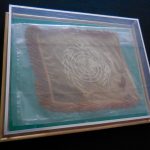
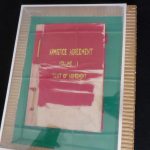

One more noteworthy item in the museum was an axe, allegedly used in the notorious 1976 Axe Murder Incident. Mr. Kang told the North Korean version of the event: a US soldier aggressively hurls the axe at a North Korean soldier, who catches the axe bare-handed and then… the incident ends with “one or two dead.”

The true story is a tale of North Korean deception, brutality, and murder, and if my memory of it were clearer at the time, Mr. Kang’s creative reinvention of it would have been difficult to ignore.
Next we were loaded on the bus once again, and driven a short distance to the Joint Security Area.
This small space is usually only seen in newspaper photos and television screens. It was surreal to look at it – even more so from the North Korean side.

The border between North and South Korea passes through the center of huts in the foreground. The far building with the sagged roof stands in South Korea. There were no South Koreans or anyone anywhere in sight on the other side of the border.
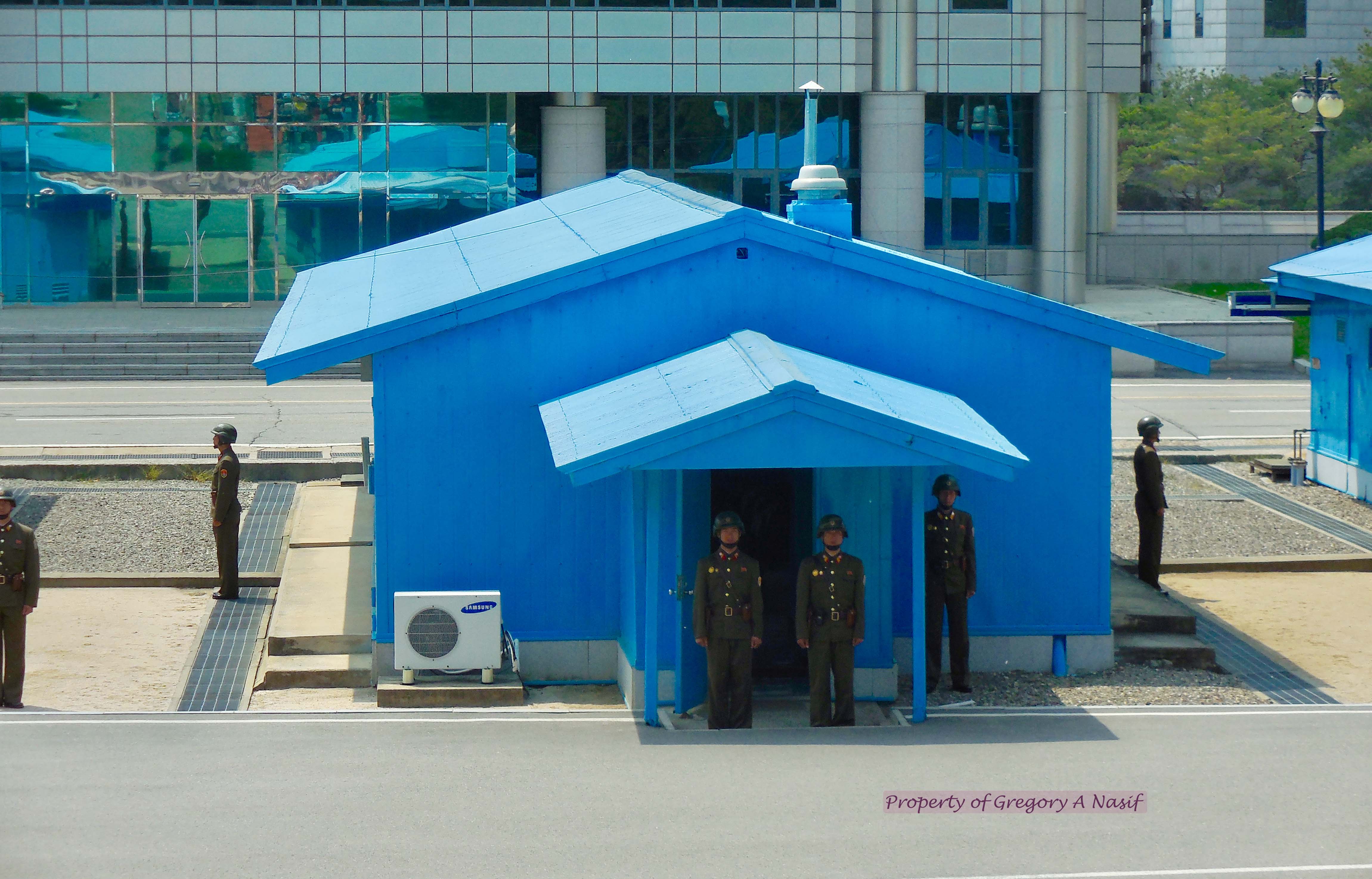
With what felt like forced hostility, the North Koreans curtly demanded us to enter the central blue hut. We were then invited to sit down.
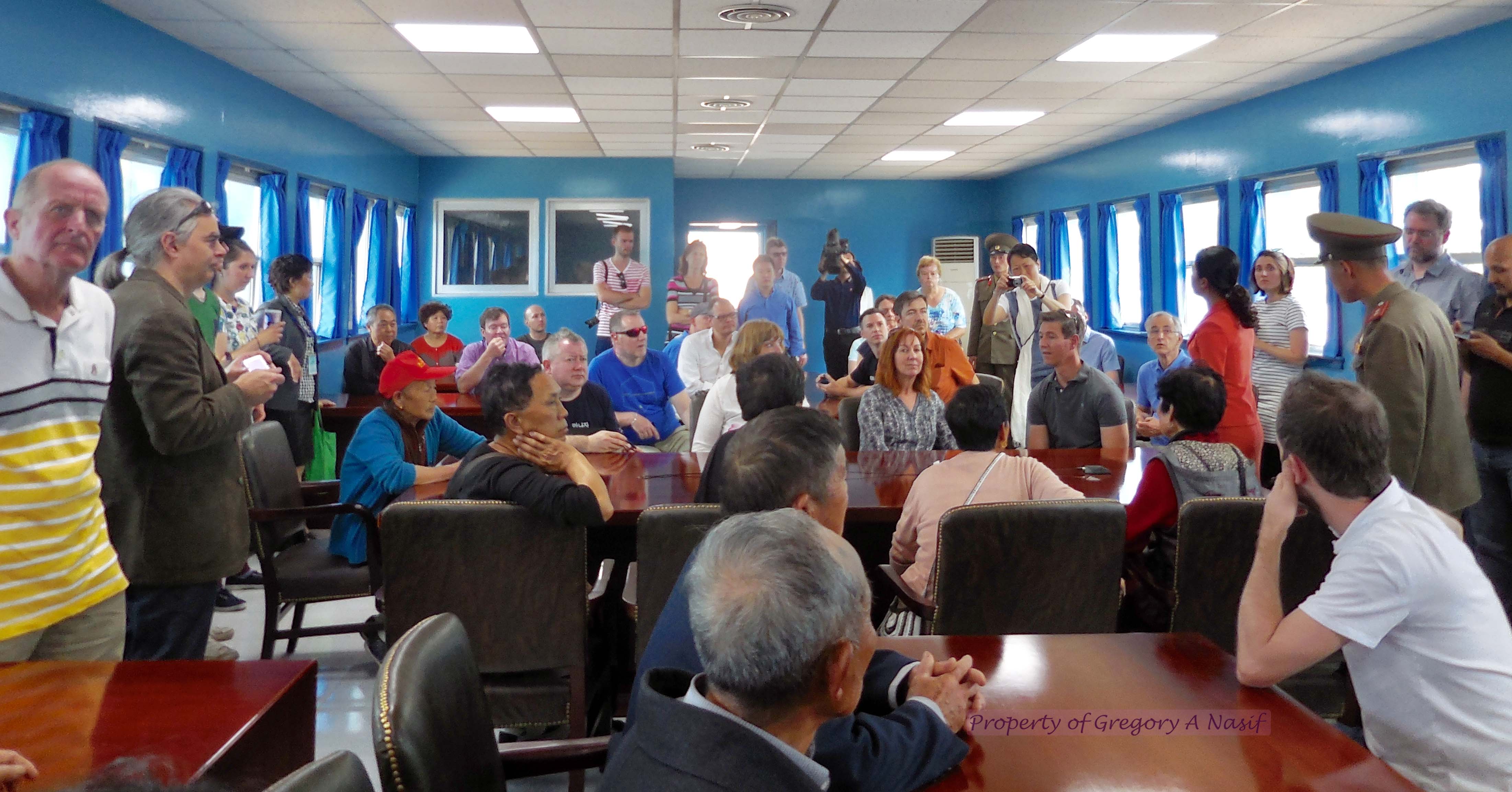
The tour guides explained the room while two angry looking North Korean soldiers stood in front of the locked door to the rest of South Korea.
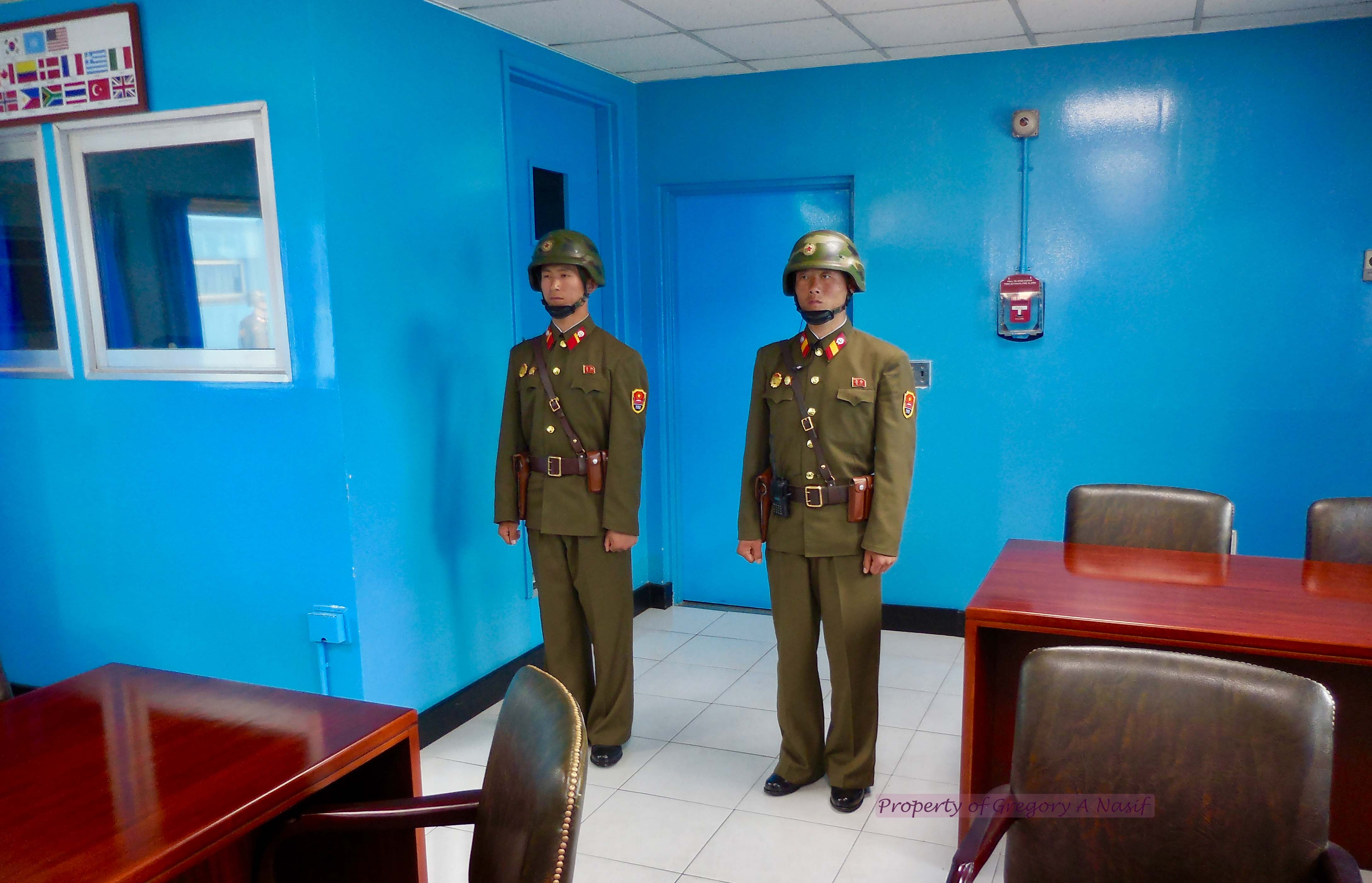
“May I take a picture with you?” I asked one of the soldiers. He angrily clapped his hands and joined his colleague in making an X with his arms – no, I couldn’t. But to their anger and consternation, several tourists, Chinese and western, were already taking pictures of me in front of the soldiers, capturing the awkward rejection and my confused withdrawal. I suspect some of them had a good laugh at those pictures later.
Shortly thereafter we were led to a balcony overlooking the area from the North.

There was misplaced glee on this balcony overlooking the DMZ. Millions of people had died over this largely unchanged line, where tension remains and whispers of World War III sometimes congregate. And yet, people were smiling, laughing, taking pictures, and basking in the sunlight.
Holding still to the icy shores of hard truth was the anchor of misery himself – the army officer who had given the short lecture earlier. His negativity seemed to make up for everyone else’s joy. He hadn’t smiled once that day – hadn’t smiled, perhaps, in his entire life – and he wasn’t about to start when a gaggle of foreigners asked him for a picture.

Photo courtesy of Roger Bell, on the soldier’s right.
Attention returned to the two flags facing off against one another.

A year earlier I had seen North Korea’s flagpole from the Dora Observatory in South Korea, and learned of the totally fabricated village that surrounds it. Built to lure defectors, the village is little more than a Christmas decoration – empty, windowless buildings with lights on a timer. and token street sweepers.
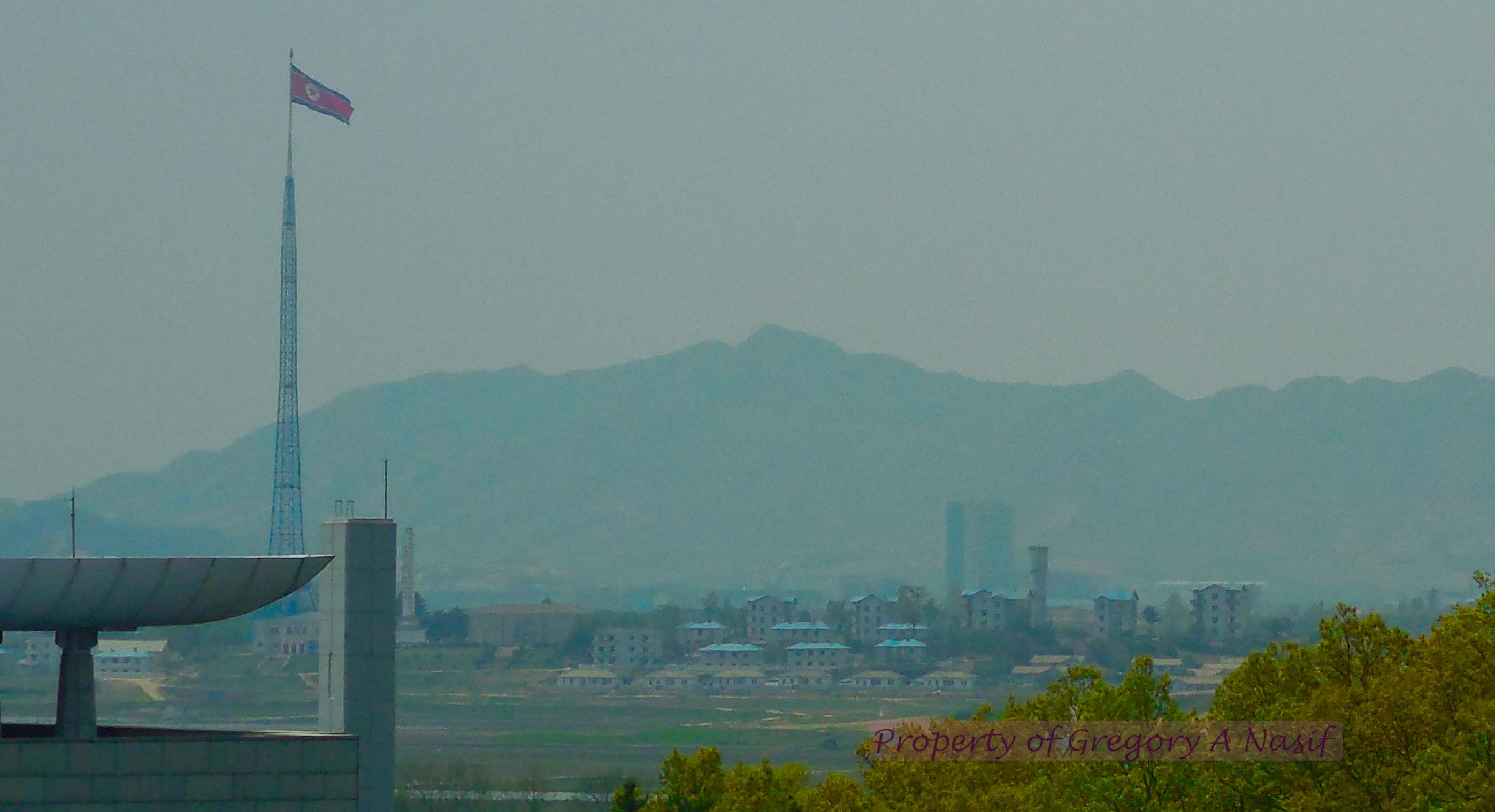
The 525-foot tall flagpole was a response to the 321.5-foot pole built by the South Koreans.

Observers from South Korea may infer a message from the North’s furiously tall flagpole: we are stronger than you. That message did not seem any different from within North Korea, a nation increasingly obviously insecure about American and South Korean military superiority.
But seeing the southern flag from the North, this writer inferred a different, simpler message: We’re here. The last stop for free peoples was just over the ridge. And it became more obvious why the south, with all the money and engineering capability the free world has to offer, didn’t bother to build the tower higher. They only needed to be seen; their presence spoke for itself.
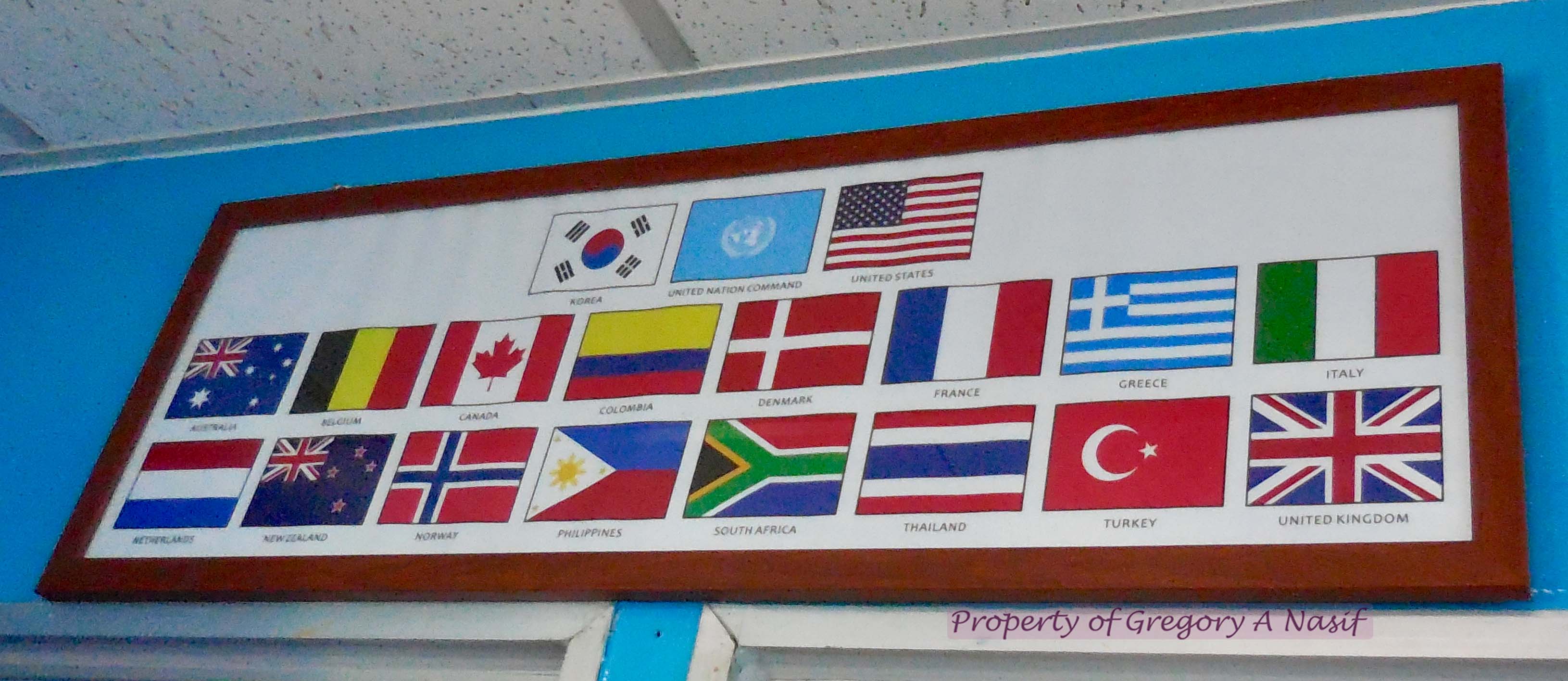
This message was on display inside the central hut in Panmunjom, where 18 flags were framed with South Korea. North Korean propaganda ignores Chinese and Soviet help in keeping their nation in the fight and their economy afloat, whereas South Korea seems proud of the coalition that has their back. The display reminds one of a quote by President Harry Truman on the drafting of the United Nations charter in 1945:
If we do not want to die together in war, we must learn to live together in peace.
The sight of the South Korean flag over the DMZ was an inspiring reminder that the outside world did exist, that it was unashamed in spite of whatever North Korean propaganda had to say about it, and that free people have not forgotten the enslaved masses north of the border.
And yet those enslaved masses did not blink, and presented these landmarks north of the demarcation line in a context continually divorced from reality.
I asked Mr. Hang why North Koreans believe the US “provoked” the Korean War.
“They provoked us, they started the war,” he said.
“What do you mean by ‘provoke?”
“The US massed troops on our border, then, they – provoked – our soldiers,” he said, really shoehorning the word in there. He would not break from this talking point, seemingly at a wall in his own script.
“[North] Korea has decided, based on the treachery of the south and the United States,” he continued as the bus barreled out of the DMZ, “that we will not wait for peace negotiations next time. We will destroy the United States!”
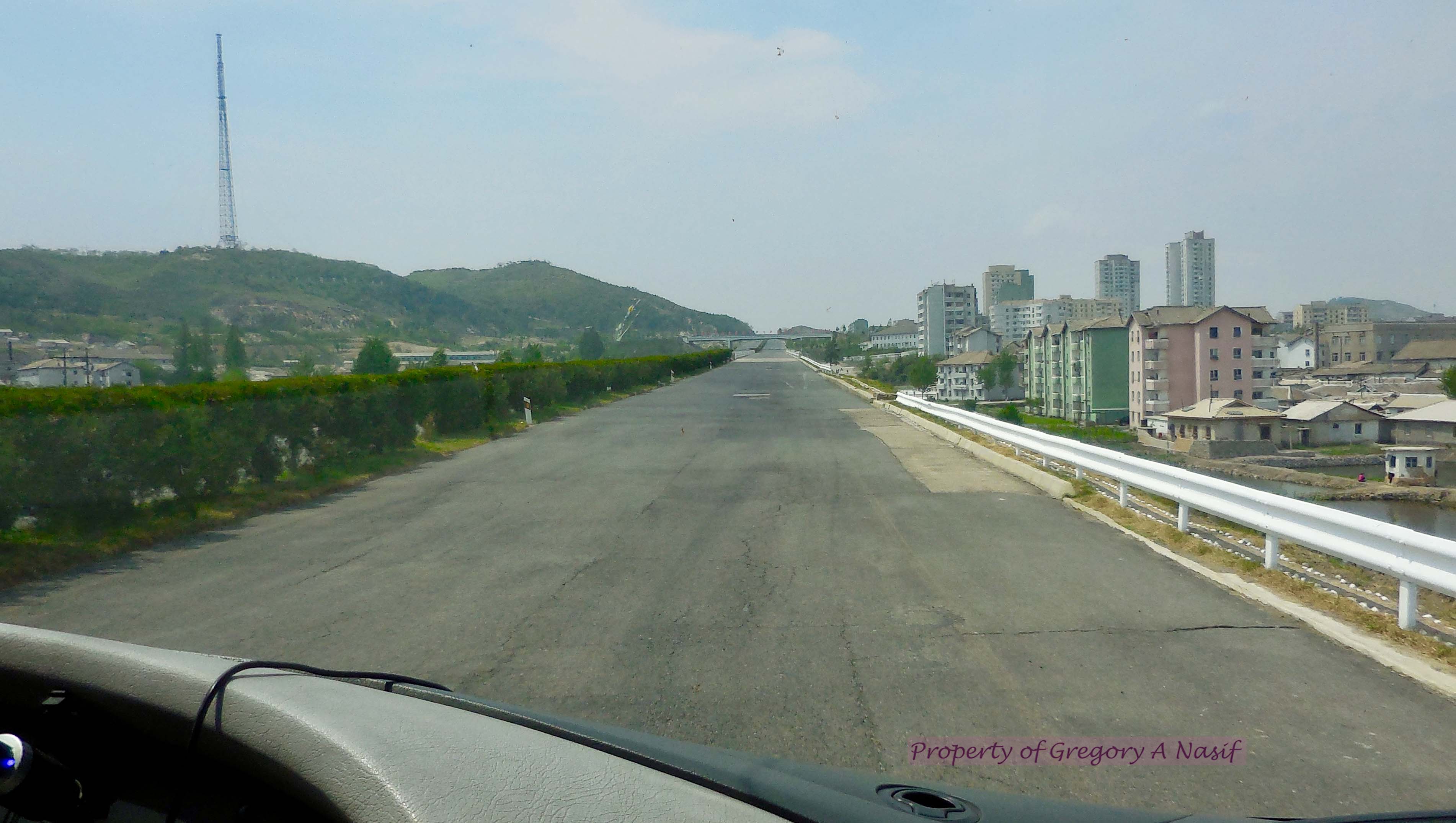
“Me too?” I laughed.
“Don’t worry,” he smiled at me. “We have all-seeing missiles. They will only hit the bases. You’ll be fine!” He followed this with a wink.
The line between lies and jokes had heavily blurred.
Finally, I asked Mr. Hang to explain the background of the competing flags.
His response was that the south built their flag to “antagonize” the North.
“Why is the north’s taller?” added a tourmate, perhaps in jest.
“BECAUSE DPR KOREA IS THE STRONGER SUPERIOR MORE POWERFUL COUNTRY AND SOUTH KOREA IS A PUPPET OF THE USA!” he shouted, quite suddenly.
The bus was silent.
Mr. Hang broke into laughter. “I’m just kidding!” he said. The soldier still seated at the front of the bus didn’t even blink. We wondered if he spoke English.
I suspect Mr. Hang did too.
More photos:
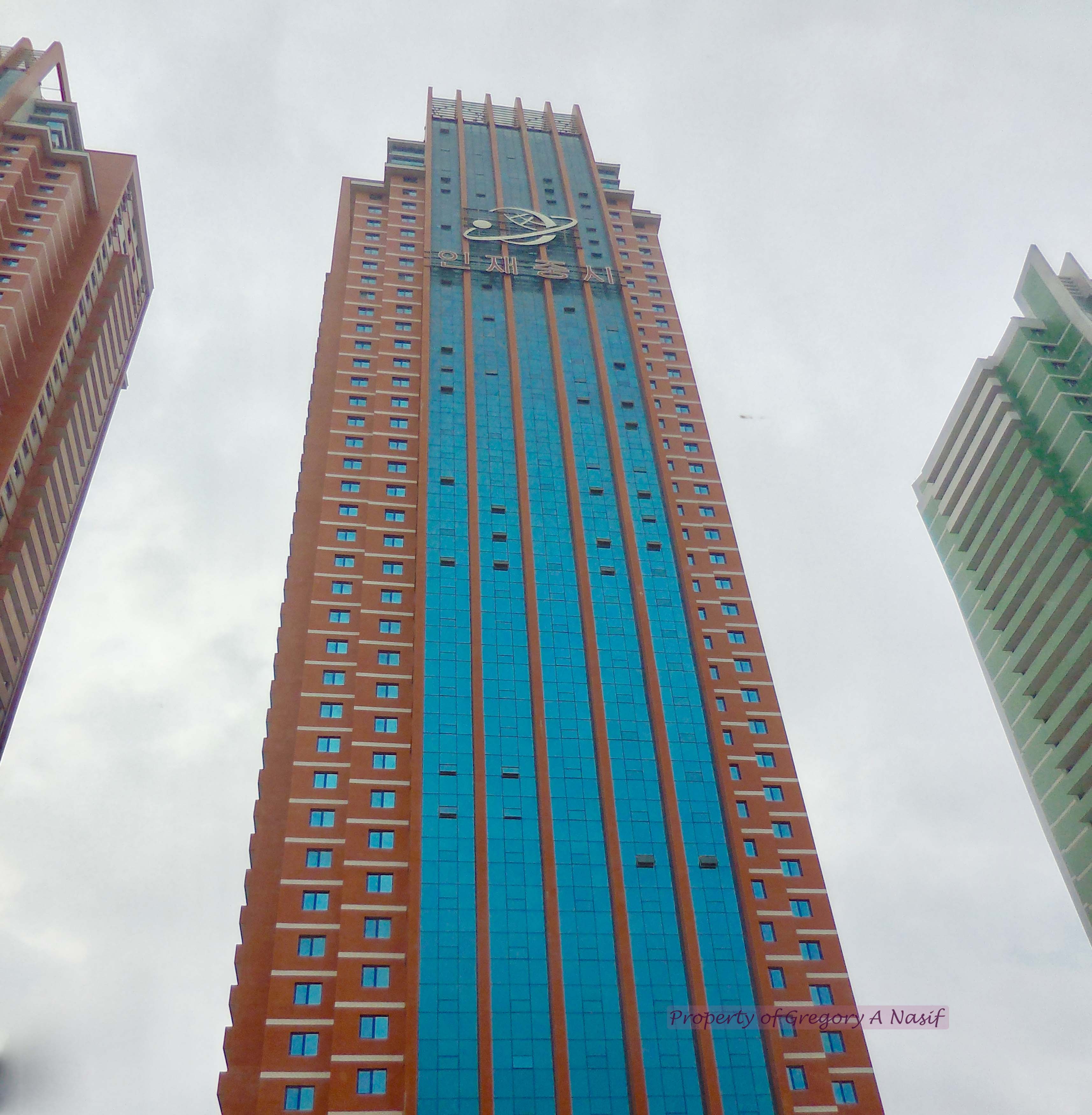
Pyongyang
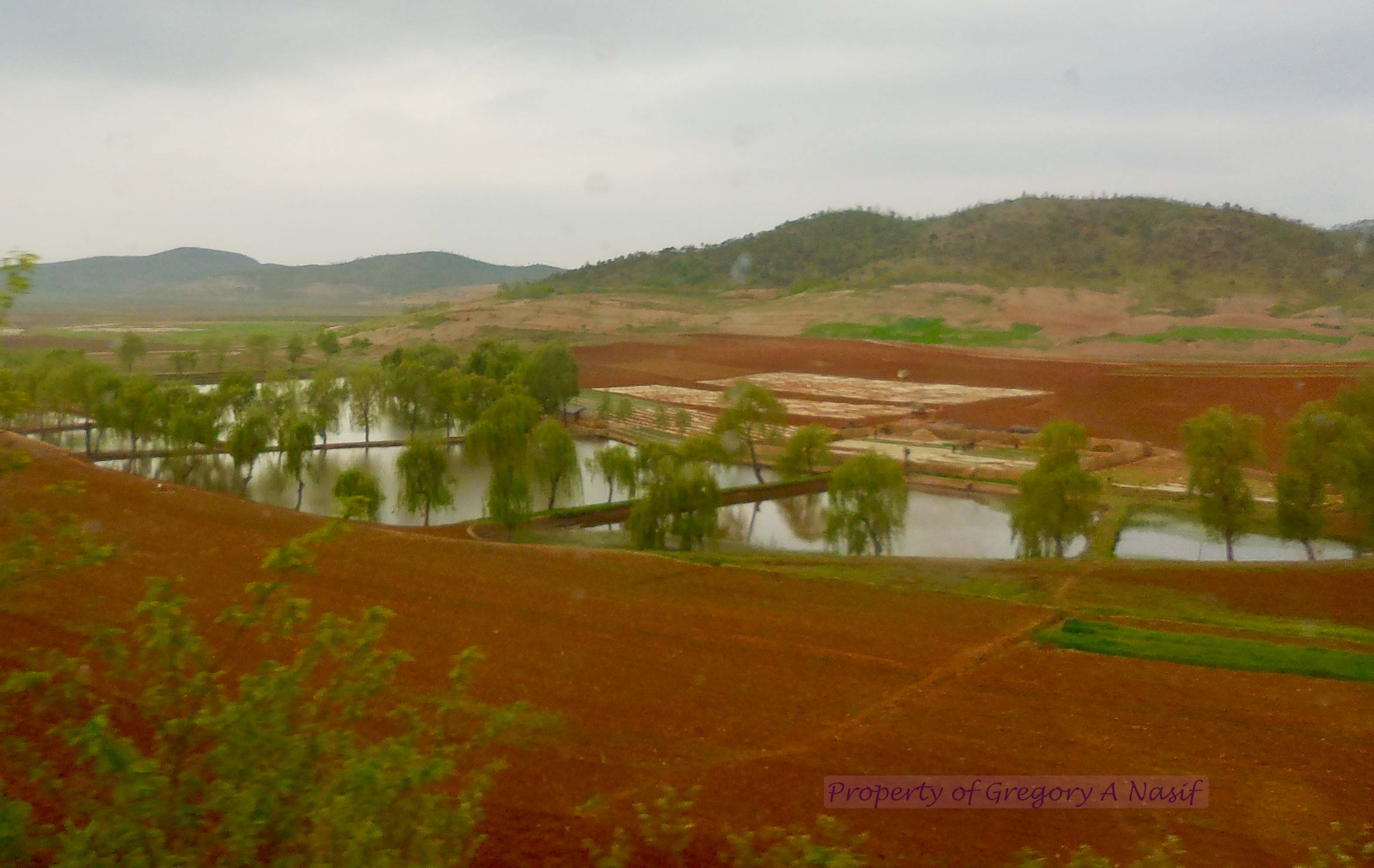
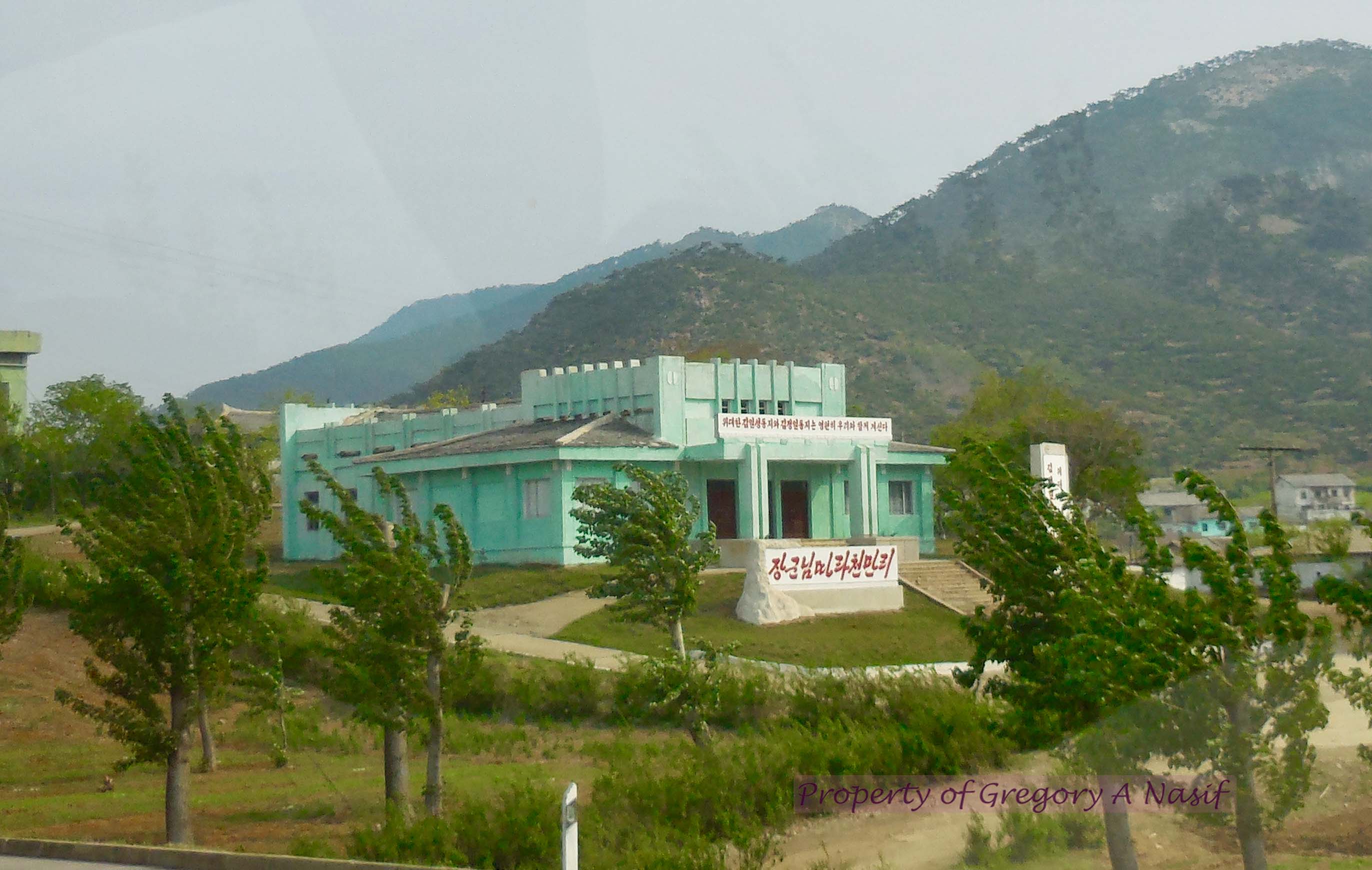

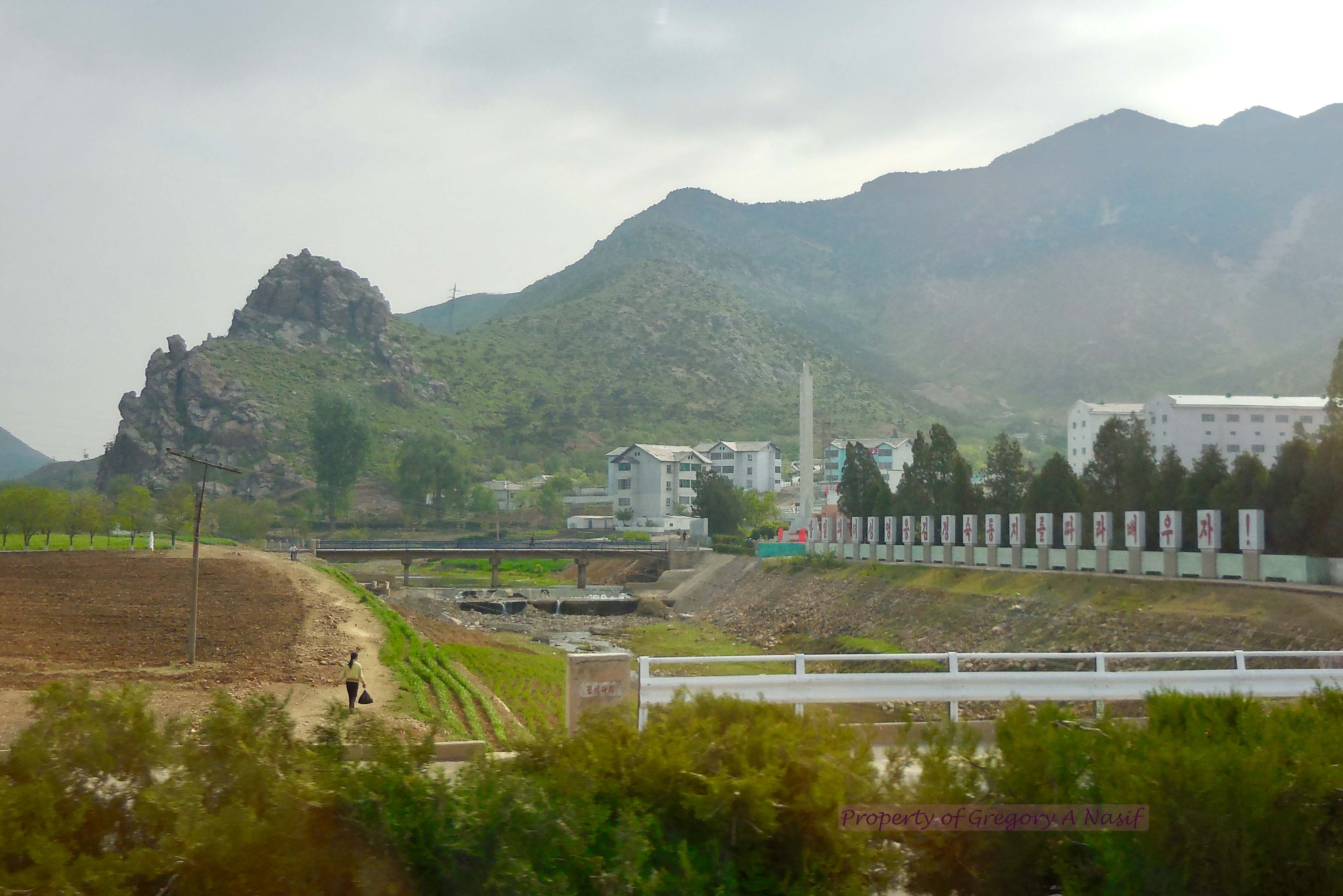
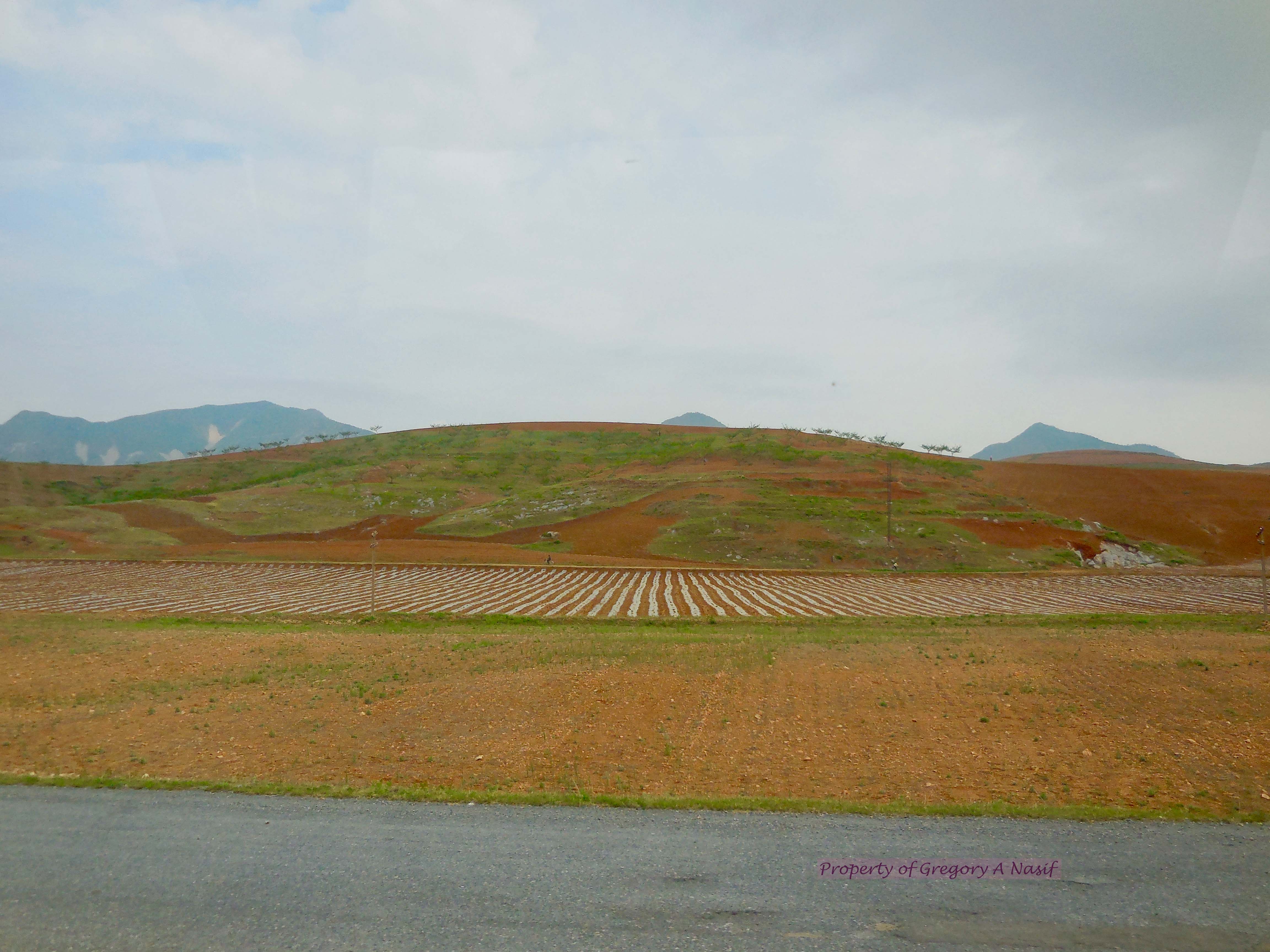

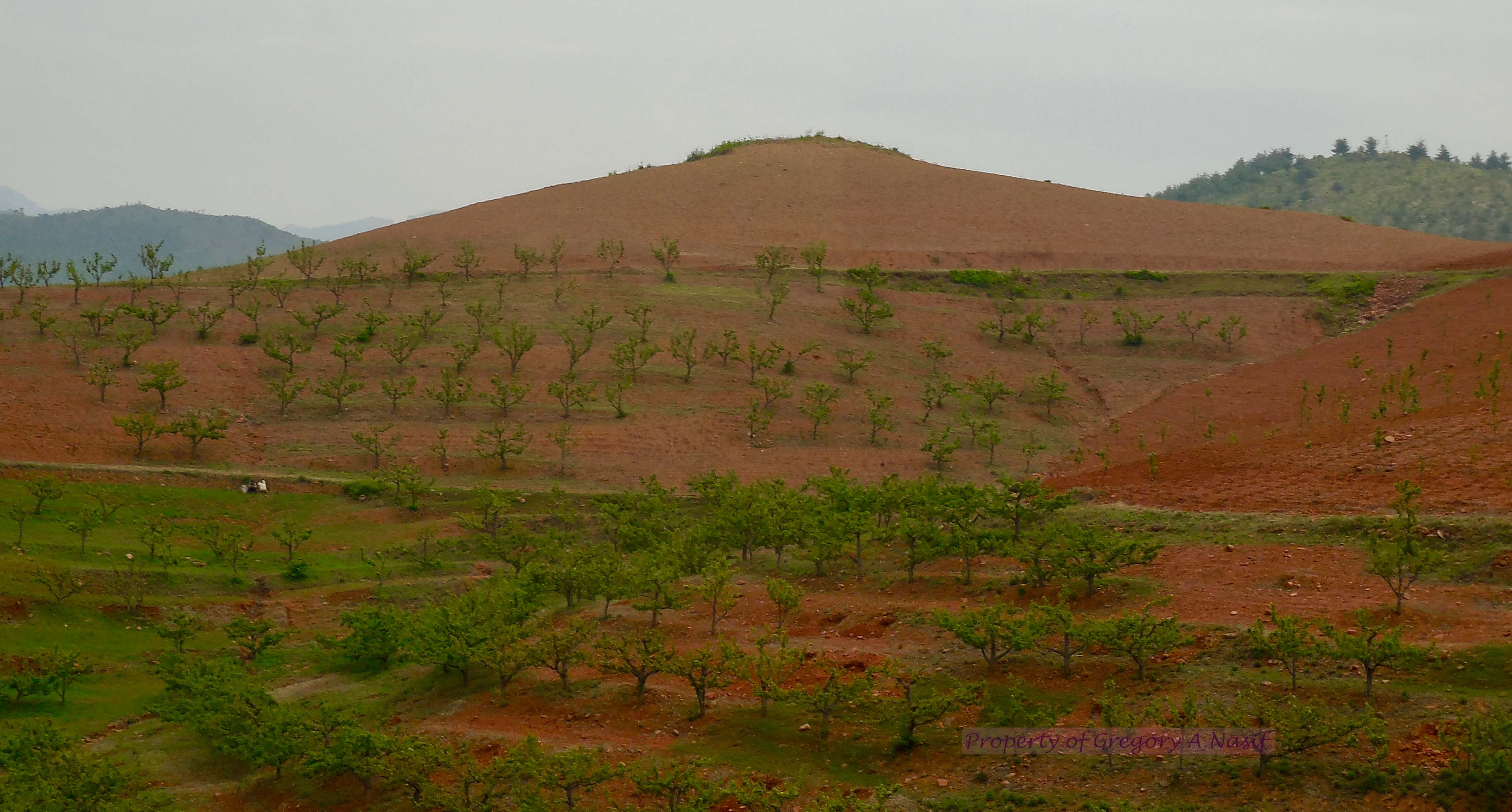

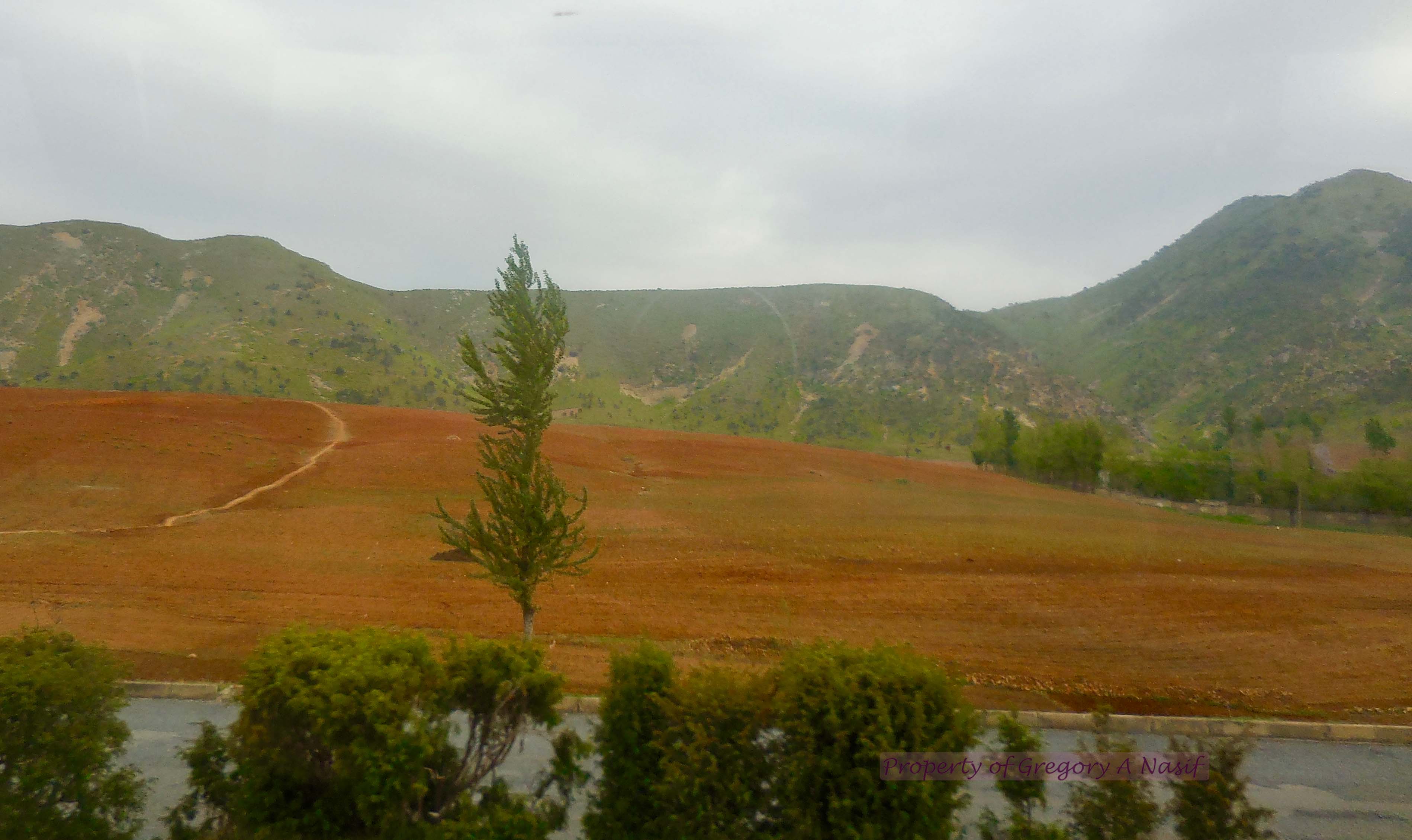

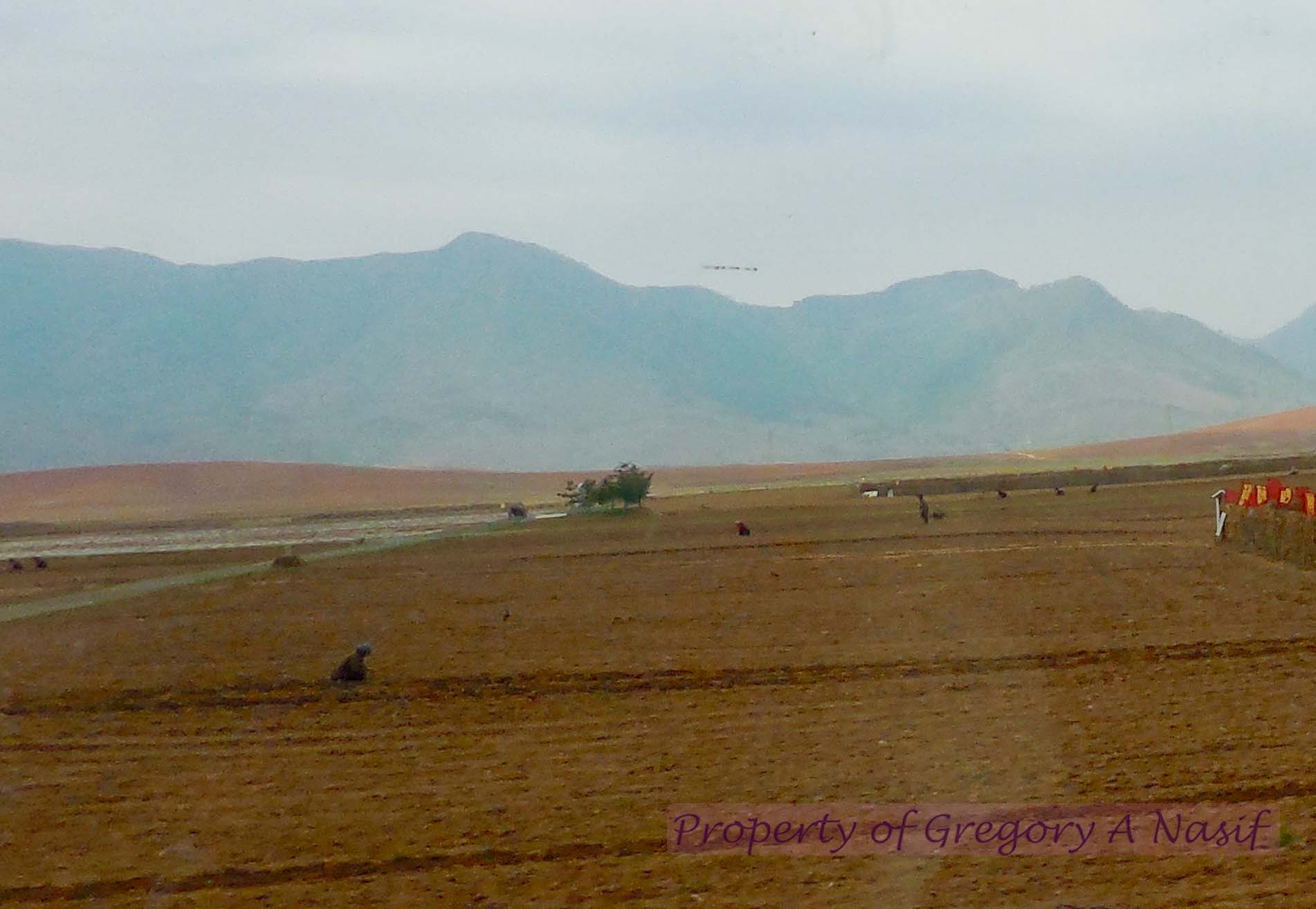
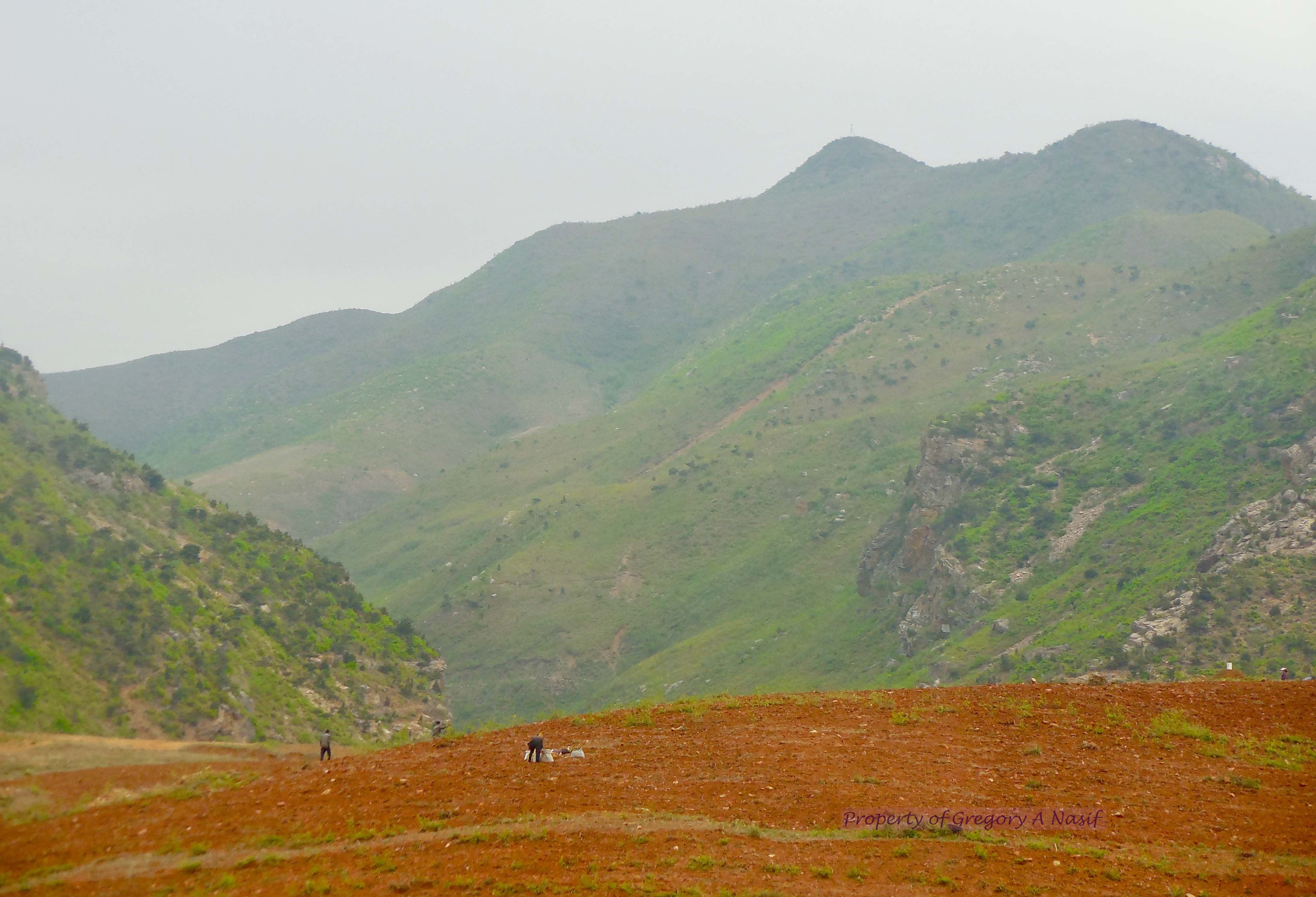

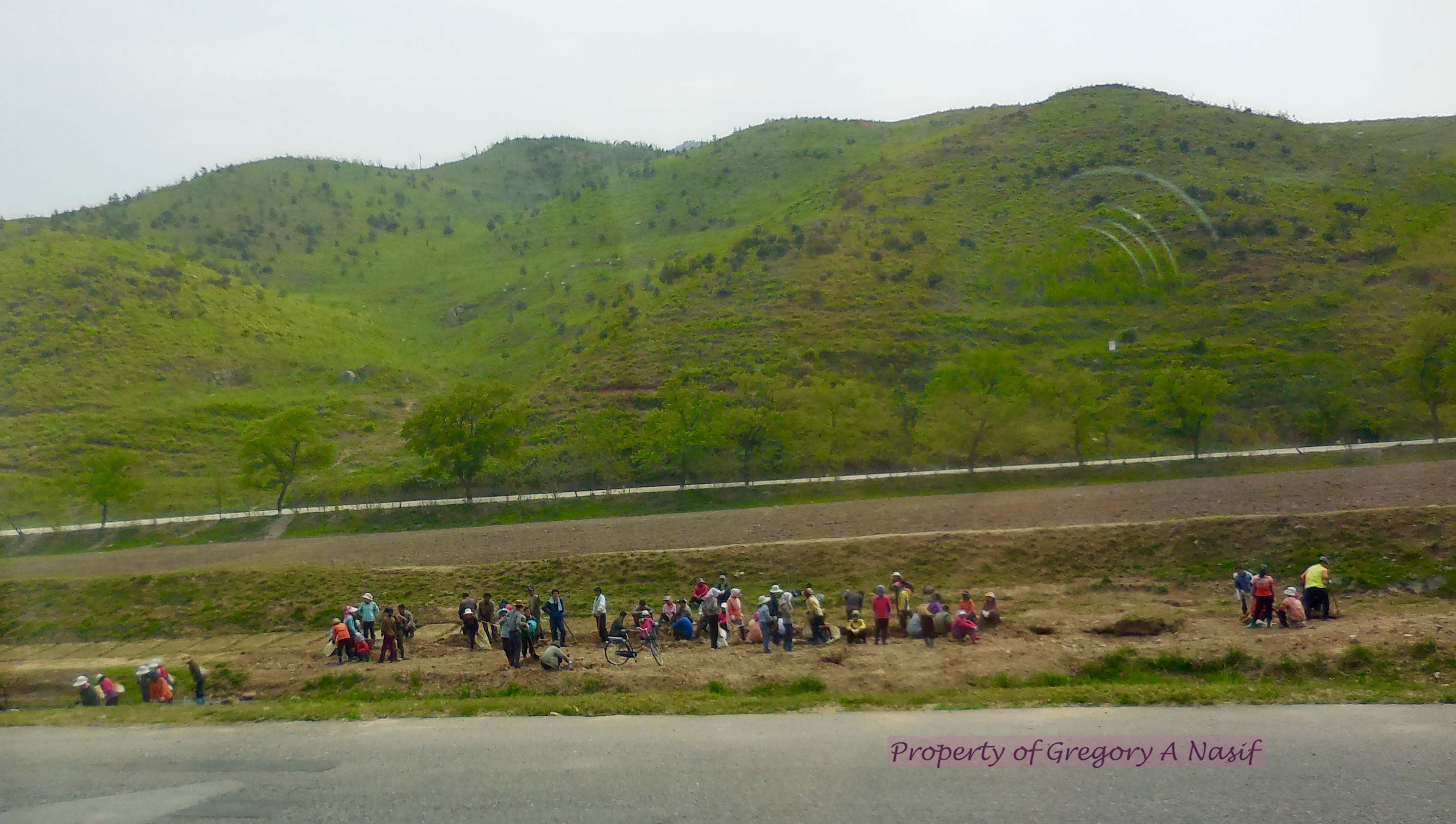

Near Sariwon, DPRK
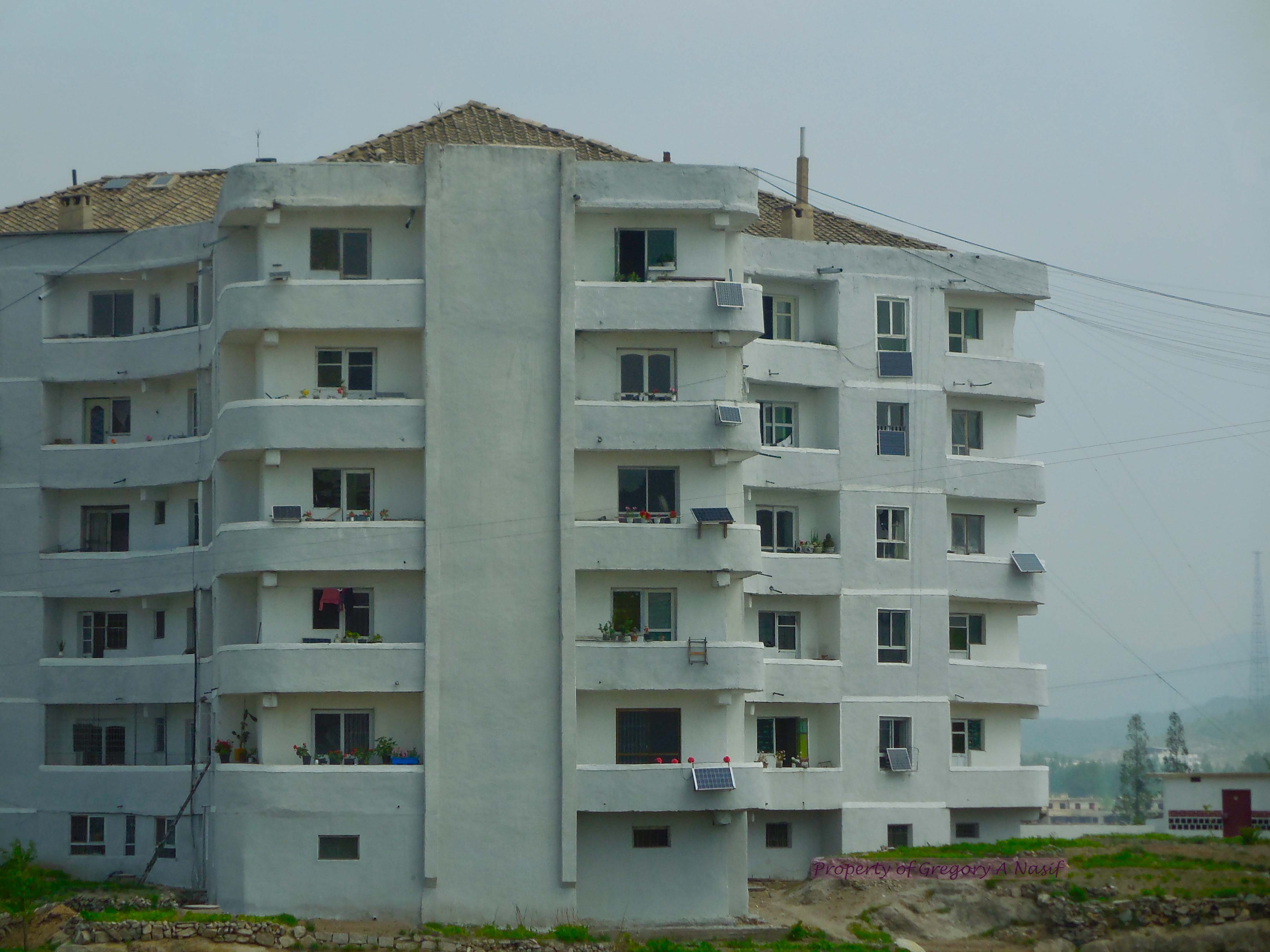
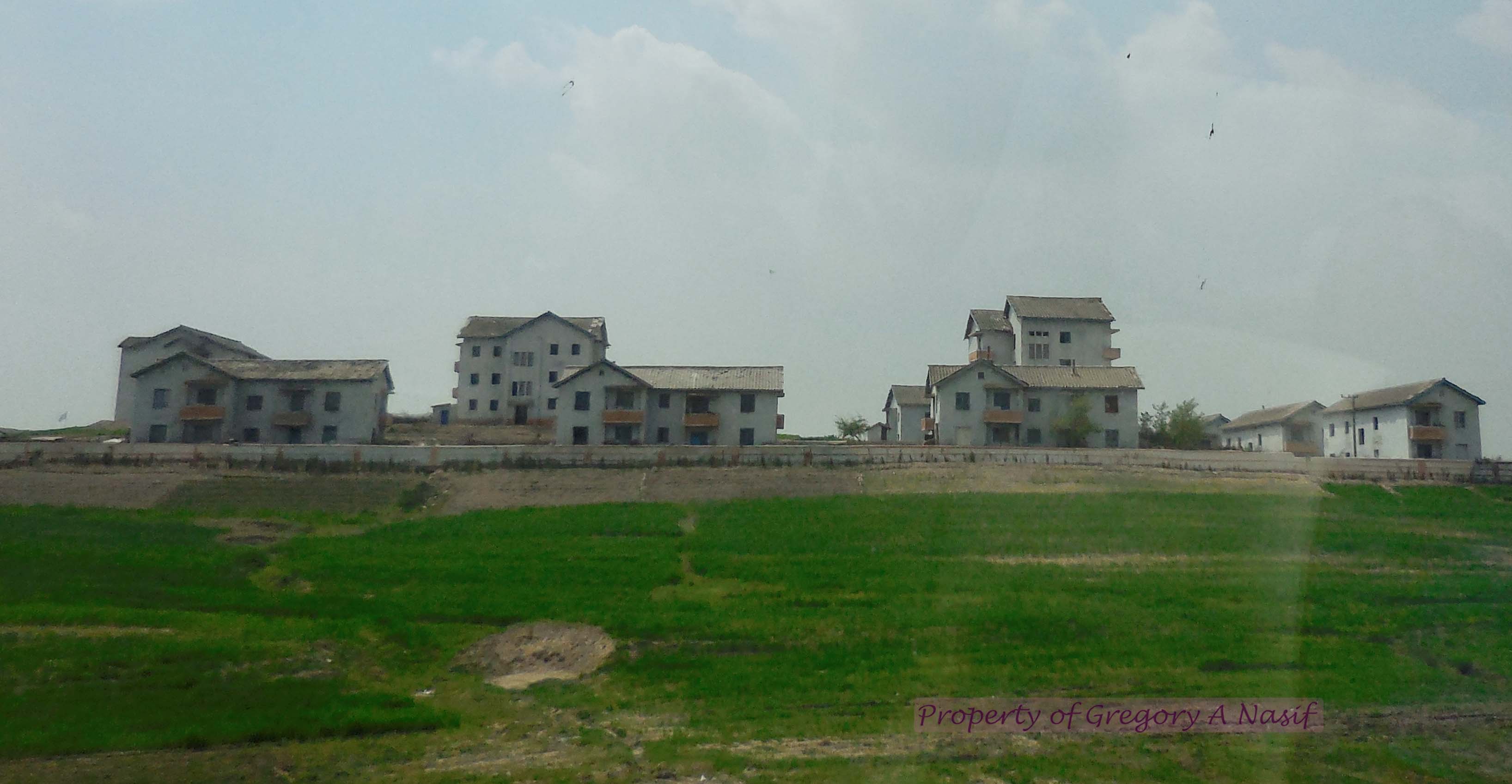
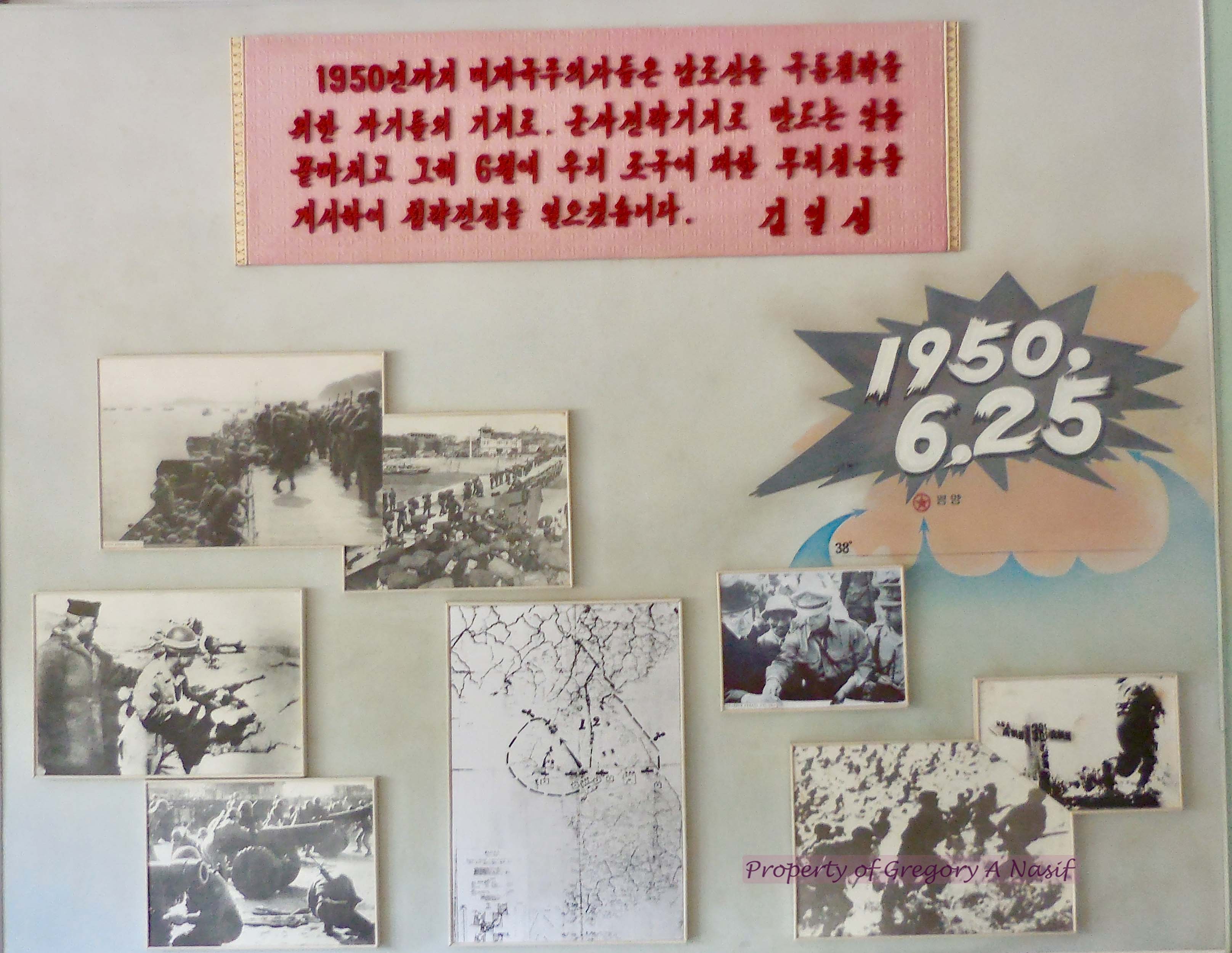
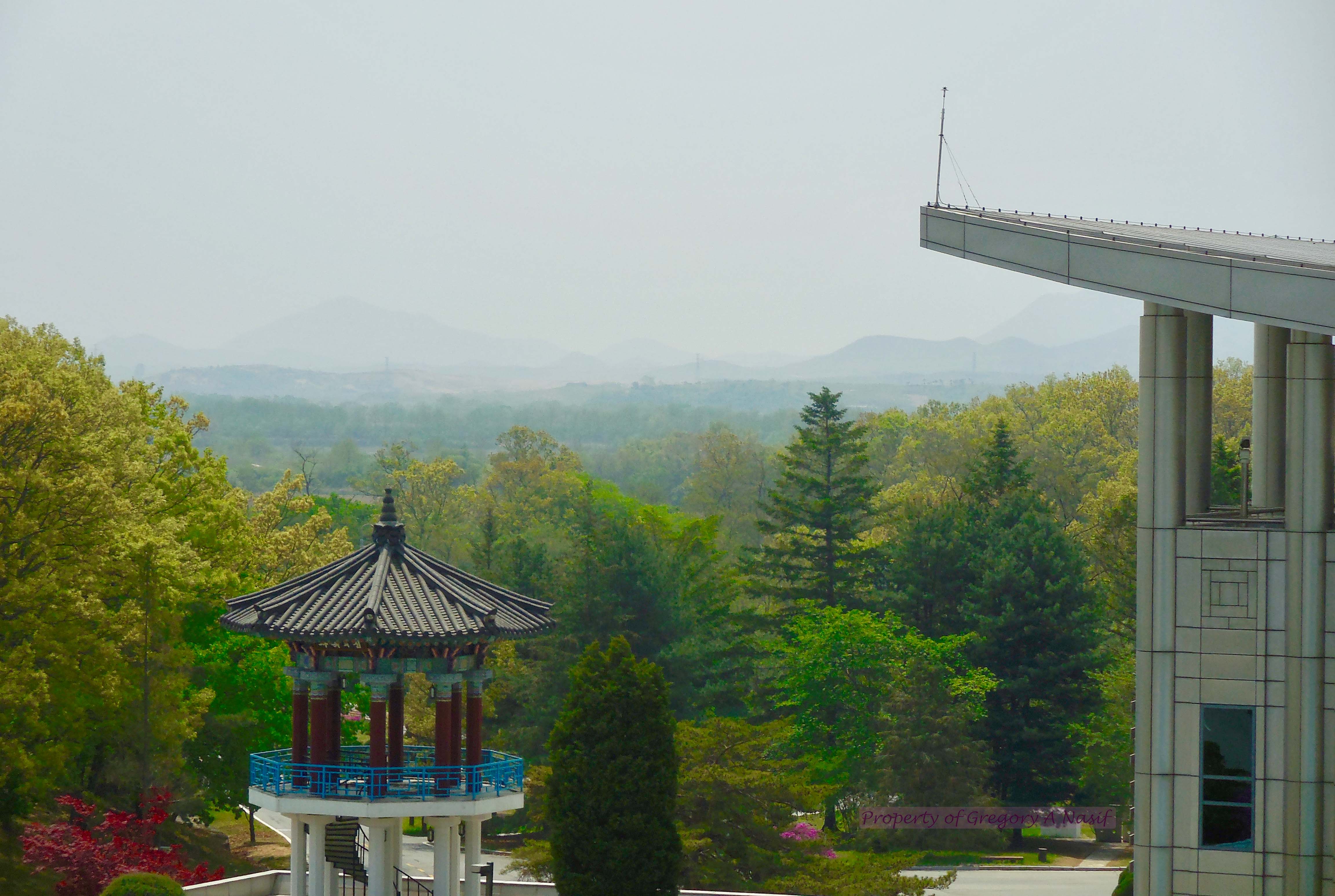
South Korea, seen from the DMZ
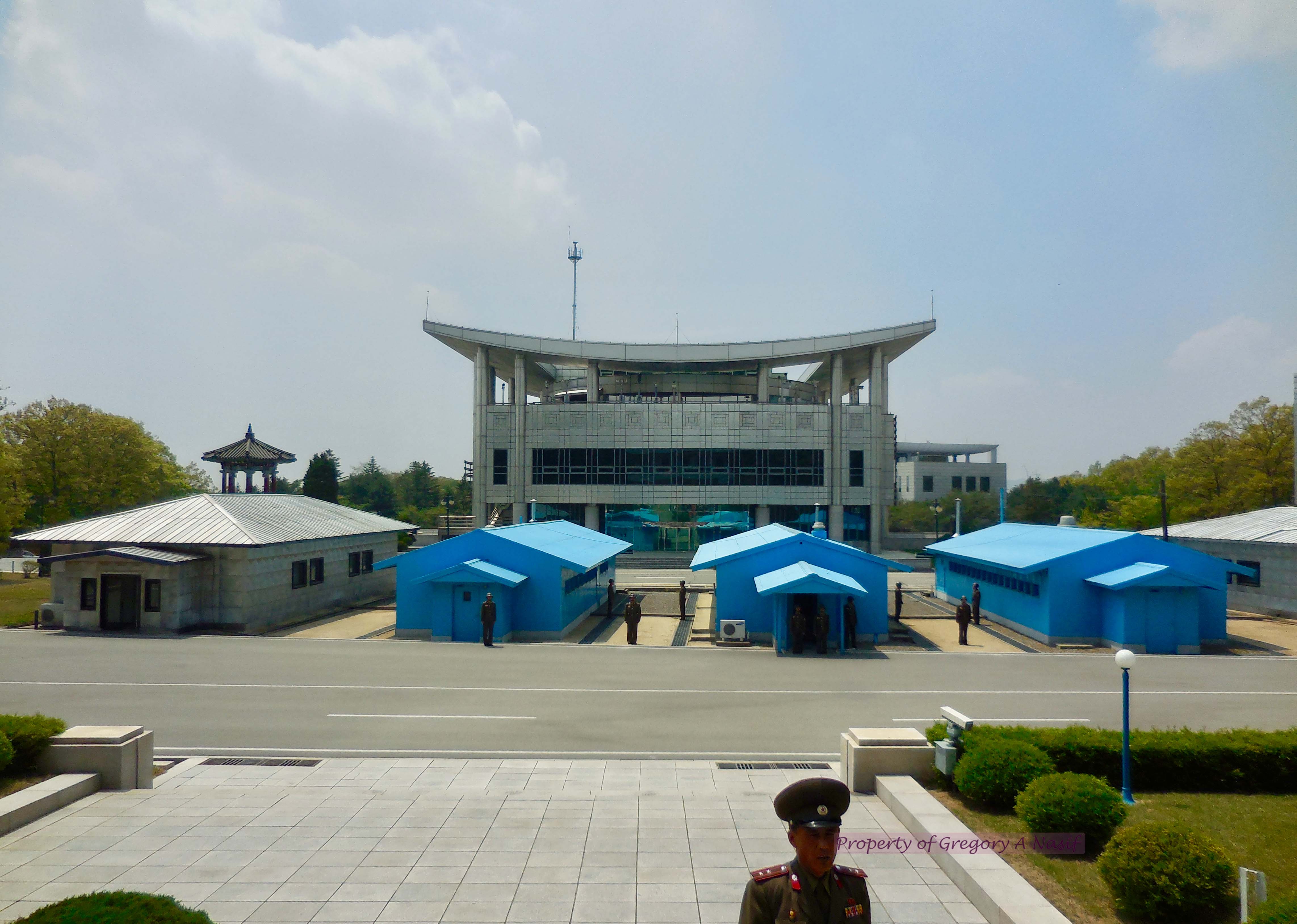
Thank you for reading. All photos are property of Gregory A Nasif unless otherwise specified.
Please send feedback to [email protected]
